In our film, we will be incoporating Low Key lighting. Low Key lighting is a key feature of the horror genre.
low-key lighting
In filming the low key lighting of a scene provides a large contrast between dark and light parts of the scene, producing an artistic or dark style through use of deep shadow. Conventionally, Low-key lighting is employed correctly in dramatic scenes to produce diversity and construct an atmosphere, most likely in mystery genres or thriller genres.
Futhermore low key lighting normally heightens the feel of alienation experienced by the viewer, consequently is usually emploed in film noir and horror genres.
Thursday, 22 April 2010
Script
Script of Narrative
Rotating grid transition (FADE IN): - “BOB STUDIOS” – fade out. (2 seconds)
* John Murphy - In the House In a Heartbeat fades in slowly*
Fade in: - “Presents” - Fade out: (1 second)
Fade in: - faulty T.V transition: – “A media Production” - Fade out: (4 seconds)
Fade in: - Strips Transition: - “Starring” – Fade out (3 seconds)
Fade in:- Film strip transition: - “Hannah Dodsworth as ‘The girl’ - ( 3 seconds)
Fade in: - Cutting Transition: - “Written by Matthew Bridge and Hannah Dodsworth” (6 seconds)
Fade in: - Sun blinds transition – “Directed by Matthew Bridge and Hannah Dodsworth” (7 seconds)
Fade in: - Rotated lines transition – “Edited by Matthew Bridge and Hannah Dodsworth” (6 seconds)
*fade into blurred forest background*
Fade in: - faulty T.V transition: – “The Hunted” - Fade out: (13 seconds)
Into blackness – Music fades to nothing.
Fifth
Below a soaring and ghostly peak. It is early evening. On an icy winter day. The forest seems murky, beckoning and mystifying beneath the bitter December night. The sky is brimming with sinister clouds, which seem to reverberate deep emerald and scarlet in this distorted dream. The sound of electricity seems to flicker as we witness the thundering bolts inside the ghostly heavens. Inside the rapid movement, one can see an eerie forest, forshadowing what is about to happen.
We move into the forest now. The silhouettes of exposed trees whimper and moan as dominate the desolate winter landscape, the light is low and something strange is in the air. A girl is briefly shown, starting to run only we are taken away from her, we are watching through someone else’s eyes now, the gentle sway as hide being green vegetation as they hunt the victim. A rapid sequence of shots follow, which parallel the desperate flee of the young girl.
The girl is desperately trailing through mud to get away from this psychotic killer. As she runs, we see that she conventionally, pretty; lengthy chocolate hair, a cream cotton cardigan and a pair of dark sapphire jeans, completed by a pair of black, stylish boots. Her face, is terrified.
The girl runs through dense layers of leaves, branches and other debris as she flees desperately. As she runs, she flees she kicks up layers of oranges reds and brows as the leaves are flung across her path.
The chase is getting faster, the shots more and more rapid in velocity. The girl arrives at a circle of jagged rocks, she’s trapped. Her desperate attempt to climb to freedom fails and she falls, as we watch from a height.
Fade out to black
A blood curdling scream ruptures from the darkness, and the intense breathing continues.
Rotating grid transition (FADE IN): - “BOB STUDIOS” – fade out. (2 seconds)
* John Murphy - In the House In a Heartbeat fades in slowly*
Fade in: - “Presents” - Fade out: (1 second)
Fade in: - faulty T.V transition: – “A media Production” - Fade out: (4 seconds)
Fade in: - Strips Transition: - “Starring” – Fade out (3 seconds)
Fade in:- Film strip transition: - “Hannah Dodsworth as ‘The girl’ - ( 3 seconds)
Fade in: - Cutting Transition: - “Written by Matthew Bridge and Hannah Dodsworth” (6 seconds)
Fade in: - Sun blinds transition – “Directed by Matthew Bridge and Hannah Dodsworth” (7 seconds)
Fade in: - Rotated lines transition – “Edited by Matthew Bridge and Hannah Dodsworth” (6 seconds)
*fade into blurred forest background*
Fade in: - faulty T.V transition: – “The Hunted” - Fade out: (13 seconds)
Into blackness – Music fades to nothing.
Fifth
Below a soaring and ghostly peak. It is early evening. On an icy winter day. The forest seems murky, beckoning and mystifying beneath the bitter December night. The sky is brimming with sinister clouds, which seem to reverberate deep emerald and scarlet in this distorted dream. The sound of electricity seems to flicker as we witness the thundering bolts inside the ghostly heavens. Inside the rapid movement, one can see an eerie forest, forshadowing what is about to happen.
We move into the forest now. The silhouettes of exposed trees whimper and moan as dominate the desolate winter landscape, the light is low and something strange is in the air. A girl is briefly shown, starting to run only we are taken away from her, we are watching through someone else’s eyes now, the gentle sway as hide being green vegetation as they hunt the victim. A rapid sequence of shots follow, which parallel the desperate flee of the young girl.
The girl is desperately trailing through mud to get away from this psychotic killer. As she runs, we see that she conventionally, pretty; lengthy chocolate hair, a cream cotton cardigan and a pair of dark sapphire jeans, completed by a pair of black, stylish boots. Her face, is terrified.
The girl runs through dense layers of leaves, branches and other debris as she flees desperately. As she runs, she flees she kicks up layers of oranges reds and brows as the leaves are flung across her path.
The chase is getting faster, the shots more and more rapid in velocity. The girl arrives at a circle of jagged rocks, she’s trapped. Her desperate attempt to climb to freedom fails and she falls, as we watch from a height.
Fade out to black
A blood curdling scream ruptures from the darkness, and the intense breathing continues.
Wednesday, 21 April 2010
Film Scripts
Psycho (1960) movie script
by Joseph Stefano. Based on the novel by Robert Bloch.
Revised December 1, 1959.
FADE IN: - Fades/transitions are demonstrated by script
EXT. PHOENIX, ARIZONA - (DAY) - HELICOPTER SHOT - Establishing shot is named, time of day, setting.
Above Midtown section of the city. It is early afternoon, a - Details of mise en scene
hot mid-summer day. The city is sun-sunblanched white and
its drifted-up noises are muted in blanched their own echoes. Details of diegetic sound
We fly low, heading in a downtown direction, passing over
traffic-clogged streets, parking lots, white business
buildings, neatly patterned residential districts. As we
approach downtown section, the character of the city begins
to change. It is darker and shabby with age and industry. We
see railroad tracks, smokestacks, wholesale fruit-and-
vegetable markets, old municipal buildings, empty lots.
vegetable The very geography seems to give us a climate of
nefariousness, of back-doorness, dark and shadowy. And secret. Here elements of mise en scene are discussed, especially the in depicting this eerie and dark setting which forshadows later events. Likewise there seems to be prcise detail into what should be depicted on screen.
We fly lower and faster now, as if seeking out a specific
location. A skinny, high old hotel comes into view. On its Further details of setting
exposed brick side great painted letters advertise "Transients- - Great detail on mise en scene
Low Weekly Rates-Radio in Every Room." We pause long enough
to establish the shoddy character of this hotel. Its open, - Representations of particular characters
curtainless windows, its silent resigned look so
characteristic of such hole-and-corner hotels. We move forward
with purposefulness and-toward a certain window. The sash is
raised as high as it can go, but the shade is pulled down to
three or four inches of the inside sill, as if the occupants
of the room within wanted privacy but needed air. We are
close now, so that only the lower half of the window frame
is in shot. No sounds come from within the room.
Suddenly, we tip downward, go to the narrow space between
shade and sill, peep into the room. - Directions for the director to follow, a precise focus for the camera
A young woman is stretched out on the mussed bed. She wears - Mise en Scene costume details.
a full slip, stockings, no shoes. She lies in and attitude
of physical relaxation, but her face, seen in the dimness of
the room, betrays a certain inner-tension, worrisome
conflicts. She is MARY CRANE, an tension, attractive girl
nearing the end of her twenties and her rope. - Representations of gender, a detailed character analysis.
A man stands beside the bed, only the lower half of his figure
visible. We hold on this tableau for a long moment, then
start forward. As we pass under the window shade,
CUT TO: - Where to cut
INT. THE HOTEL ROOM - (DAY) - Setting, Lighting details
A small room, a slow fan buzzing on a shelf above the narrow
bed. A card of hotel rules is pasted on the mirror above the
bureau. An unopened suitcase and a woman's large, straw open-
top handbag are on the bureau. - Very detailed mise-en-scene analysis, setting, props and directions for particular shots.
On the table beside the bed there are a container of Coco-
Cola and an unwrapped, untouched egg-salad sandwich. There
is no radio. - Continued prop details.
The man standing by the bed, wearing only trousers, T-shirt
and sox, is SAM LOOMIS, a good-looking, sensual shirt man
with warm humorous eyes and a compelling smile. He is blotting
his neck and face with a thin towel, and is staring down at
Mary, a small sweet smile playing about his mouth. Mary keeps
her face turned away from him. - Framing, costume elements are described
After a moment, Sam drops the towel, sits on the bed, leans
over and takes Mary into his arms, kisses her long and warmly,
holds her with a firm possessiveness. The kiss is disturbed
and finally interrupted by the buzzing closeness of an
inconsiderate fly. Sam smiles, pulls away enough to allow
Mary to relax again against the pillow. He studies her, frowns
at her unresponsiveness, then speaks in a low, intimate,
playful voice.
SAM
Never did eat your lunch, did you.
Mary looks at his smile, has to respond, pulls him to her,
kisses him. Then, and without breaking the kiss, she swings
her legs over the side of the bed, toe-searches around, finds
her shoes, slips her feet into searches them. And finally
pulls away and sits up.
MARY
I better get back to the office.
These extended lunch hours give my
boss excess acid.
She rises, goes to the bureau, takes a pair of small earrings
out of her bag, begins putting them on, not bothering or
perhaps not wanting to look at herself in the mirror. Sam
watches her, concerned but unable to inhibit his cheery,
humorous good mood. Throughout remainder of this scene, they
occupy themselves with dressing, hair-combing, etc.
SAM
Call your boss and tell him you're
taking the rest of the afternoon
off. It's Friday anyway... and hot.
MARY
(soft sarcasm)
What do I do with my free afternoon,
walk you to the airport?
SAM
(meaningfully)
We could laze around here a while
longer.
MARY
Checking out time is three P.M. Hotels
of this sort aren't interested in
you when you come in, but when your
time's up...
(a small anguish)
Sam, I hate having to be with you in
a place like this.
SAM
I've heard of married couples who
deliberately spend occasional nights
in cheap hotels. They say it...
MARY
(interrupting)
When you're married you can do a lot
of things deliberately.
SAM
You sure talk like a girl who's been
married.
MARY
Sam!
SAM
I'm sorry, Mary.
(after a moment)
My old Dad used to say 'when you
can't change a situation, laugh at
it.' Nothing ridicules a thing like
laughing at it.
MARY
I've lost my girlish laughter.
SAM
(observing)
The only girlish thing you have lost.
MARY
(a meaningful quiet,
then, with difficulty:)
Sam. This is the last time.
SAM
For what?
MARY
This! Meeting you in secret so we
can be... secretive! You come down
here on business trips and we steal
lunch hours and... I wish you wouldn't
even come.
SAM
Okay. What do we do instead, write
each other lurid love letters?
MARY
(about to argue, then
turning away)
I haven't time to argue. I'm a working
girl.
SAM
And I'm a working man! We're a regular
working-class tragedy!
(he laughs)
MARY
It is tragic! Or it will be... if we
go on meeting in shabby hotels
whenever you can find a tax-deductible
excuse for flying down deductible
here...
SAM
(interrupting,
seriously)
You can't laugh at it, huh?
MARY
Can you?
SAM
Sure. It's like laughing through a
broken jaw, but...
From analysing this script, I have learn that it is crucial to describe ecery element of the scene; mise en scene, camera and lighting must all be clearly described.
The set up seems to mirror an actual Novel in various ways, the deep character and setting detail ect.
Thursday, 1 April 2010
The Location
For our location, we decided to choose a forest which would fit perfectly with the horror genre. T

Why did I choose this location?
I choose this location for various reasons:
1) Firstly, it was located in the Glossop area, which meant that we did not have to move equipment for far distances, and it was easy to go to the location and film at any time.
2) Forests are the perfect setting for horror films. Forests are utilized in films such "The Blair Witch Project" because they connote isolation and the wild. Furthermore, the forest provided lots of help in layering the shots. Debris such as stones, twigs, branches and leaves have been used to layer the shot, and they were all provided in the forest
3) The forest also allowed us to film on different levels. Trees, and ledges provided us with the ability to get to high locations and film the subject from different heights, which made the film more interesting.
What were the negatives of the location?
The negatives of the location was that it was dangerous. People had left glass and other objects in the forest which meant we had to be very careful during the production process not injure ourselves.
Moreover, the weather was extremely cold, and as the location was high up it mean that the location was even colder, thus we had to bring extra clothing and equipment to ensure our safety.

Why did I choose this location?
I choose this location for various reasons:
1) Firstly, it was located in the Glossop area, which meant that we did not have to move equipment for far distances, and it was easy to go to the location and film at any time.
2) Forests are the perfect setting for horror films. Forests are utilized in films such "The Blair Witch Project" because they connote isolation and the wild. Furthermore, the forest provided lots of help in layering the shots. Debris such as stones, twigs, branches and leaves have been used to layer the shot, and they were all provided in the forest
3) The forest also allowed us to film on different levels. Trees, and ledges provided us with the ability to get to high locations and film the subject from different heights, which made the film more interesting.
What were the negatives of the location?
The negatives of the location was that it was dangerous. People had left glass and other objects in the forest which meant we had to be very careful during the production process not injure ourselves.
Moreover, the weather was extremely cold, and as the location was high up it mean that the location was even colder, thus we had to bring extra clothing and equipment to ensure our safety.
Sound Script
Sound Script
Before filming started, script like document.Shot timing is estimated.
(15 seconds)Titles on black screen - The song “In the House- In A Heartbeat” by John Murphy fades slowly in. The song is completley instrumental, as the song hits the titles the volume increases dramatically.
(5 seconds)Establishing shot - Electronic, grinding like non-diogetic music is played. (Volume increased)
(3 seconds)Cuts of plant close ups with snippets of running ghost. Fast editing - Same alien like music with the light sound of male breathing.
(3 seconds)Running girl (Shots of shadows mixed in, fast editing.) - Same continuous alien like music with breathing becoming louder and faster.
(4 seconds)Shot of girl running - Same alien music with loud male breathing. Faint female screams added in.
(6 seconds)Long shot of girl - Alien music mixed with a slightly higher pitched music. Screams and breathing continue.
(1.5 seconds)Close up of girl stepping over camera - Same music screams louder slightly, breathing quickens.
(4 seconds)Shots of surroundings - Breathing with added footsteps.
(5 seconds)Long shot of girl running up a hill - Screams, loud and high pitched obviously female. Breathing, music, footsteps have all stopped.
(3 seconds)Black screen - Silent
Before filming started, script like document.Shot timing is estimated.
(15 seconds)Titles on black screen - The song “In the House- In A Heartbeat” by John Murphy fades slowly in. The song is completley instrumental, as the song hits the titles the volume increases dramatically.
(5 seconds)Establishing shot - Electronic, grinding like non-diogetic music is played. (Volume increased)
(3 seconds)Cuts of plant close ups with snippets of running ghost. Fast editing - Same alien like music with the light sound of male breathing.
(3 seconds)Running girl (Shots of shadows mixed in, fast editing.) - Same continuous alien like music with breathing becoming louder and faster.
(4 seconds)Shot of girl running - Same alien music with loud male breathing. Faint female screams added in.
(6 seconds)Long shot of girl - Alien music mixed with a slightly higher pitched music. Screams and breathing continue.
(1.5 seconds)Close up of girl stepping over camera - Same music screams louder slightly, breathing quickens.
(4 seconds)Shots of surroundings - Breathing with added footsteps.
(5 seconds)Long shot of girl running up a hill - Screams, loud and high pitched obviously female. Breathing, music, footsteps have all stopped.
(3 seconds)Black screen - Silent
Filming dates
Filming Dates
Dates for filming/editing, when, where and what happened on these days.
21 February 3-6pm (Sun set at 6pm) - First day of filming on location. I used my own camera and tripod to film over a 100 shots, using different shot layering, camera angles and shots and contrasting lighting styles.. Loosing light was our main problem. From the weather forecast I knew that it would be sunny and I had to research when the sun was setting so we could get to the location an hour beforehand to commence preparation and to find a suitable location for filming. We got there in suitable time and had enough time to find a good filming location. We found a small wooded area which was surrounded by enormous rock edges, the sun shining through the trees produced a beautiful effect and producing silhouettes with the setting sun generated some incredibly interesting effects. The location shoot was extremely successful, there was lots of equipment to layer the shots and we received so much filming time, we did not need to film that much more. Moreover, when after filming I had to import the clips onto my computer, which seemed to be a fairly problem-free process.
22 February 9:30am-12:00pm – Today provided good lighting, however we had some continuity issues as this was shot during the morning, whereas the previous filming event occurred at sunset. We filmed on Shire Hill once again, this time capturing establishing shots along with some close ups of surroundings and plants. Moreover, due to the time we had a lot of visitors to the area who used the spaces for walking, to overcome this we just had to wait. To overcome the time issue, I found that when I began editing, reducing the brightness of the shot and adding particular colour tones made the shot seem as if it was shot during the evening. Consequently the continuity concerns were reduced.
1 March 1:30am-13:15pm - This was our first day of editing. We decided to use Matthew's laptop to edit our film as both he and I are more comfortable with the editing software. We started by placing our chosen shots in a suitable order. Moreover, I choose some effect to edit the shots with. I had to increase the contrast, reduce the brightness, add an “echo” effect to achieve my effects.
4 March 9:30pm-12pm – Today, we altered the shot times to make a much faster cutting rhythm. Furthermore we incorporated red tints to our shots, which seemed to work well with the horror genre.
8 March 1:30am-3:15pm – Today we had completed the shortening of the shots, so we had a sharp cutting rythm. Although I then decided to add non-diegetic sound to the film, I found several sound effects on “sounddogs.com” and proceeded to add echo’s to the breathing and increase the volume on certain shots.
11March 9:30am-1:15pm – Today we considered that we had completed the production process, we felt that the editing and filming process were at the best standard we could produce. However, we decided in order to know that our product was at it is best standard, we produced a trail viewing for our teachers in order to receive some feedback. In the feedback, we had realized that there was little constrast with the fast cutting rythm, and that some of the effects took away of from what were attemting to portay because the film was so stylized. For instance, we had doubled the speed on some of the running shots, and it didn’t seem appropriate as it looked particularly unnatural and unfitting for the film. Consequently we slowed down the clips to a natural speed. Likewise, we realized that somehow we had to integrate titles, although we felt that because the opening was so sharp and poignant, that adding titles would ruin this effect. Thus, we had to decided whether to place titles after the initial action or before.
15 March 1:30pm-3:15 – In the end, we felt only appropriate to integrate the titles before the action. Additionally we asked for more feedback on the product, a few major issues were raised. Due to the fast pace, our feedback consisted of producing a contrast to this fast pace, and to use some handheld shots from the killers viewpoint, in addition to some shots of the killer.
When we decided we did need a contrast to the action, we decided that we produce an additional scene linear to the scene already produced, our ideas consisted of a flash-forward demonstrating how the remains of a body we uncovered in the woods, with police and tape. Or, we decided that we would incorporate some shot in a graveyard, demonstrating someone mourning the killing.
18 March 9:30am-12pm – Today we concluded that the initial idea of discovering a body in the woods required too many mise en scene requirements, as an expensive costume, setting and props were needed which we could not provide.
As a result, we utilized the idea of a point of view shot of someone mourning the death of the child. However, this footage was unused due to issues with technology.
22 March 9:30am-12pm – Due to the errors and the fears over reducing the effect of the opening, we decided against integrating an alternative scene. I then added the opening titles and incorporated the song “Jon Murphy – In a heartbeat”.
25 March – Today I decided to alter the sound track. I wanted to make it very disorientating for the viewer, thus I incorporated some reverberation, layered 10 different sound effects and increased to volume on particular shots.
Dates for filming/editing, when, where and what happened on these days.
21 February 3-6pm (Sun set at 6pm) - First day of filming on location. I used my own camera and tripod to film over a 100 shots, using different shot layering, camera angles and shots and contrasting lighting styles.. Loosing light was our main problem. From the weather forecast I knew that it would be sunny and I had to research when the sun was setting so we could get to the location an hour beforehand to commence preparation and to find a suitable location for filming. We got there in suitable time and had enough time to find a good filming location. We found a small wooded area which was surrounded by enormous rock edges, the sun shining through the trees produced a beautiful effect and producing silhouettes with the setting sun generated some incredibly interesting effects. The location shoot was extremely successful, there was lots of equipment to layer the shots and we received so much filming time, we did not need to film that much more. Moreover, when after filming I had to import the clips onto my computer, which seemed to be a fairly problem-free process.
22 February 9:30am-12:00pm – Today provided good lighting, however we had some continuity issues as this was shot during the morning, whereas the previous filming event occurred at sunset. We filmed on Shire Hill once again, this time capturing establishing shots along with some close ups of surroundings and plants. Moreover, due to the time we had a lot of visitors to the area who used the spaces for walking, to overcome this we just had to wait. To overcome the time issue, I found that when I began editing, reducing the brightness of the shot and adding particular colour tones made the shot seem as if it was shot during the evening. Consequently the continuity concerns were reduced.
1 March 1:30am-13:15pm - This was our first day of editing. We decided to use Matthew's laptop to edit our film as both he and I are more comfortable with the editing software. We started by placing our chosen shots in a suitable order. Moreover, I choose some effect to edit the shots with. I had to increase the contrast, reduce the brightness, add an “echo” effect to achieve my effects.
4 March 9:30pm-12pm – Today, we altered the shot times to make a much faster cutting rhythm. Furthermore we incorporated red tints to our shots, which seemed to work well with the horror genre.
8 March 1:30am-3:15pm – Today we had completed the shortening of the shots, so we had a sharp cutting rythm. Although I then decided to add non-diegetic sound to the film, I found several sound effects on “sounddogs.com” and proceeded to add echo’s to the breathing and increase the volume on certain shots.
11March 9:30am-1:15pm – Today we considered that we had completed the production process, we felt that the editing and filming process were at the best standard we could produce. However, we decided in order to know that our product was at it is best standard, we produced a trail viewing for our teachers in order to receive some feedback. In the feedback, we had realized that there was little constrast with the fast cutting rythm, and that some of the effects took away of from what were attemting to portay because the film was so stylized. For instance, we had doubled the speed on some of the running shots, and it didn’t seem appropriate as it looked particularly unnatural and unfitting for the film. Consequently we slowed down the clips to a natural speed. Likewise, we realized that somehow we had to integrate titles, although we felt that because the opening was so sharp and poignant, that adding titles would ruin this effect. Thus, we had to decided whether to place titles after the initial action or before.
15 March 1:30pm-3:15 – In the end, we felt only appropriate to integrate the titles before the action. Additionally we asked for more feedback on the product, a few major issues were raised. Due to the fast pace, our feedback consisted of producing a contrast to this fast pace, and to use some handheld shots from the killers viewpoint, in addition to some shots of the killer.
When we decided we did need a contrast to the action, we decided that we produce an additional scene linear to the scene already produced, our ideas consisted of a flash-forward demonstrating how the remains of a body we uncovered in the woods, with police and tape. Or, we decided that we would incorporate some shot in a graveyard, demonstrating someone mourning the killing.
18 March 9:30am-12pm – Today we concluded that the initial idea of discovering a body in the woods required too many mise en scene requirements, as an expensive costume, setting and props were needed which we could not provide.
As a result, we utilized the idea of a point of view shot of someone mourning the death of the child. However, this footage was unused due to issues with technology.
22 March 9:30am-12pm – Due to the errors and the fears over reducing the effect of the opening, we decided against integrating an alternative scene. I then added the opening titles and incorporated the song “Jon Murphy – In a heartbeat”.
25 March – Today I decided to alter the sound track. I wanted to make it very disorientating for the viewer, thus I incorporated some reverberation, layered 10 different sound effects and increased to volume on particular shots.
Mise-en-scene and Narrative details
Mise en scene requirements for the film
Props/Costume
We wanted to produce representation of teenage girl based on;
This is a still, from Scream, which constructs a representation of a teenage girl. (see evaluation for detailed analysis)
For our mise en scene, were need to following costume elements to produce the representation;
White Top
Jeans
Black Shoes
Brown Cardigan
Other props required;
Branches for layering shots.
Sound;
http://www.sounddogs.com/
Props/Costume
We wanted to produce representation of teenage girl based on;
This is a still, from Scream, which constructs a representation of a teenage girl. (see evaluation for detailed analysis)
For our mise en scene, were need to following costume elements to produce the representation;
White Top
Jeans
Black Shoes
Brown Cardigan
Other props required;
Branches for layering shots.
Sound;
http://www.sounddogs.com/
Wednesday, 31 March 2010
Story Board
Story Board
Shot Descriptions
*John Murphy - In the House In a Heartbeat fades in slowly*
All titles on a black background with white eerie writing (boxes put into two larger boxes):
First Box- Bob Studios. (2 seconds)
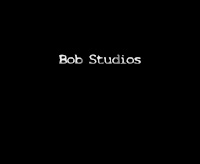
Fade
Second Box- Presents (1 second)
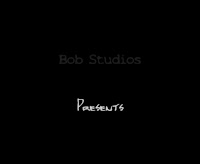
Fade
Third Box- A Media Production (4 seconds)
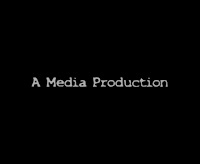
Fade
Fourth Box- Starring (3 seconds)
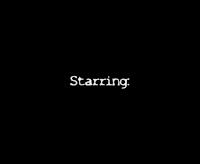
Fade
Fifth Box- Hannah Dodsworth as the Girl (3 seconds)
Fade
Sixth Box- Written by Matthew Bridge and Hannah Dodsworth. (6 seconds)
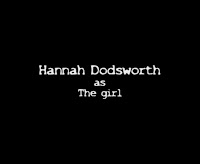
Fade
Seventh Box- Directed by Matthew Bridge and Hannah Dodsworth. (7 seconds)
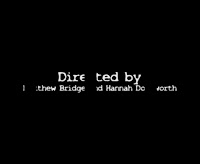
Fade
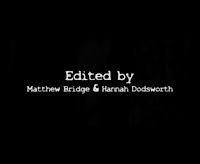
Eighth Box- Edited by Matthew Bridge and Hannah Dodsworth. (6 seconds)
Cut
Ninth Box- The Hunted, film title with a picture of the location forest behind.
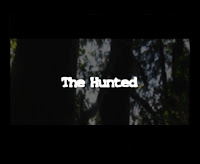
Eerie writing and slightly edited background. (13 seconds)
Into blackness – Music fades to nothing.
Cut
Tenth Box- Establishing shot of hill with sun behind, creating silhouette.
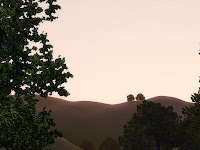
Cut
Eleventh Box- Dark thunder clouds, edited to make darker with white flashes.
Cut
Twelfth Box- Close up of plants, setting the scene with foreground clear and
background blurred.
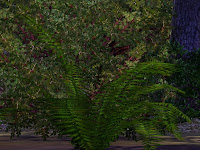
Cut
Thirteenth Box- A second close up plants.
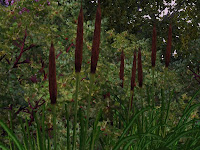
Cut
Fourteenth Box- Extreme close up of leaves on the floor.
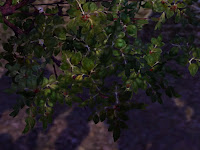
Cut
fifteenth Box- Mid shot of figure running past, looking through trees to create
point of view shot. Figure is blurred with a red tint.
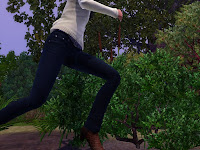
Cut
Sixteenth Box- Similar shot style to above, legs of figure shot is taken from a low
angle.
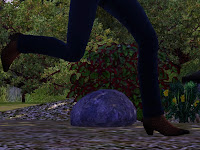
Cut
Seventeenth Box- Extreme close up of hand grabbing mud, slipping showing struggle. Red tint with flickers of white light.
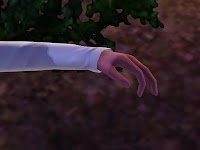
Cut
Eighteenth Box- Mid shot of girl running. Red tint with other flickers of images put
on top.
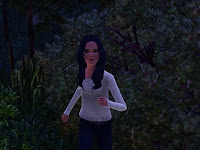
Cut
Nineteenth Box- Long shot of girl running towards camera. Red blur to girl, flickers of white light once again added.
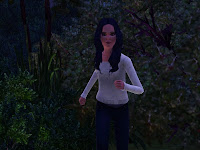
Cut
Twentieth Box- Mid shot of girl running close to camera and out of shot. Point of view once again.
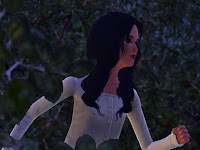
Cut
Twenty-first Box- Extreme long shot of surroundings with a red tint.
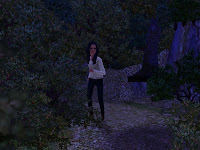
Cut
Twenty-second box- Close up of shoe running over camera. Point of view shot, red tint once again.
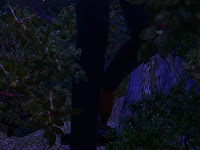
Cut
Twenty-third Box- Over the shoulder view, close up, of girl running. Delay added to create effect.
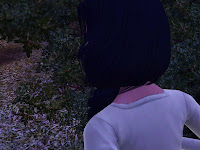
Cut
Twenty-fourth Box- Extreme long shot high angle of girl running surrounded by trees. Point of view shot. Red tint and white flickers mixed with images.
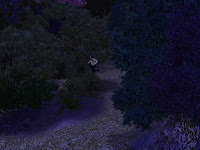
Cut
Twenty-fifth Box- Long shot of girl running up hill, struggle shown with red tint.
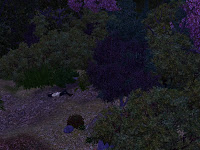
Shot Descriptions
*John Murphy - In the House In a Heartbeat fades in slowly*
All titles on a black background with white eerie writing (boxes put into two larger boxes):
First Box- Bob Studios. (2 seconds)

Fade
Second Box- Presents (1 second)

Fade
Third Box- A Media Production (4 seconds)

Fade
Fourth Box- Starring (3 seconds)

Fade
Fifth Box- Hannah Dodsworth as the Girl (3 seconds)
Fade
Sixth Box- Written by Matthew Bridge and Hannah Dodsworth. (6 seconds)

Fade
Seventh Box- Directed by Matthew Bridge and Hannah Dodsworth. (7 seconds)

Fade

Eighth Box- Edited by Matthew Bridge and Hannah Dodsworth. (6 seconds)
Cut
Ninth Box- The Hunted, film title with a picture of the location forest behind.

Eerie writing and slightly edited background. (13 seconds)
Into blackness – Music fades to nothing.
Cut
Tenth Box- Establishing shot of hill with sun behind, creating silhouette.

Cut
Eleventh Box- Dark thunder clouds, edited to make darker with white flashes.
Cut
Twelfth Box- Close up of plants, setting the scene with foreground clear and
background blurred.

Cut
Thirteenth Box- A second close up plants.

Cut
Fourteenth Box- Extreme close up of leaves on the floor.

Cut
fifteenth Box- Mid shot of figure running past, looking through trees to create
point of view shot. Figure is blurred with a red tint.

Cut
Sixteenth Box- Similar shot style to above, legs of figure shot is taken from a low
angle.

Cut
Seventeenth Box- Extreme close up of hand grabbing mud, slipping showing struggle. Red tint with flickers of white light.

Cut
Eighteenth Box- Mid shot of girl running. Red tint with other flickers of images put
on top.

Cut
Nineteenth Box- Long shot of girl running towards camera. Red blur to girl, flickers of white light once again added.

Cut
Twentieth Box- Mid shot of girl running close to camera and out of shot. Point of view once again.

Cut
Twenty-first Box- Extreme long shot of surroundings with a red tint.

Cut
Twenty-second box- Close up of shoe running over camera. Point of view shot, red tint once again.

Cut
Twenty-third Box- Over the shoulder view, close up, of girl running. Delay added to create effect.

Cut
Twenty-fourth Box- Extreme long shot high angle of girl running surrounded by trees. Point of view shot. Red tint and white flickers mixed with images.

Cut
Twenty-fifth Box- Long shot of girl running up hill, struggle shown with red tint.

Thursday, 11 March 2010
Health and Safety - Risk Assement Table
After visiting the locations, I produced a table of risk assesments and safety precautions;http://rapidshare.com/files/362074991/Risk_Assesment_Table.docx.html
Thursday, 25 February 2010
Market research and our audience
Audience and Market research
As part of our media research, we must produce some form of market research to discover the audience of our genre; horror.
What is market research?
Market research is a planned attempt to gain information, opinions and views a current product, market or to develop an image of the consumer for a product, with additional point to gather feedback or ideas from the audience of a product. Companies or Individual often interpret their research about an individual consumer or organisation or product through numerical, statistical and analytical methods to discover their particular interest.
Some things which can be considered in market research are market trends, customer analysis, choice modelling, competitor analysis, risk analysis, product research, and advertisement.
Why do we need to apply it to our film?
Film production and distribution integrate various methods of market research and targeting audiences. Some companies which work the UK are the “All Industry film Industry”, “The British Academy of Film & Television Arts”, “The British Film Institute”, “The British Video Association”, “The Cinema Advertising Association”, “The Cinema Exhibitors' Association”,” The Film Distributors' Association” and the “The UK Film Council”.
Audience
When we are planning our film, it was important to consider the audience. If our product didn’t have an audience, it would be useless to continue. Our research is crucial, questionnaires, comparisons with existing products and focus groups are the are all used to target the audience. Producers want to discover their focus groups, which are basically clarified by;
• income bracket/status
• age
• gender
• race
• location
As horror films are an established genre, they clearly already had an audience. As a result my initial step was to research online for the demographic of horror films, I found two tables from http://www.valmorgan.com.au/au/audiences/profiles/horror-movies/
Chart One
The first chart demonstrates the ages of the horror movie audience. It demonstrates that although the 50+ age group makes up most of the general population, they only make up 3 percent of the horror genre audience, while the 35-49 age group also make a big 27 percent of the general population however make a miniscule 6 percent of the horror film audience. The graph does demonstrate however that the horror film drama is hugely popular with the under 25 age group with them making up a 72 percent share of the audience. Although it is a restrictive audience as it only makes up 19 percent of the total general population, which is further restricted through restriction of film through certification. By conclusion, the horror film genre is is very popular with the under 25 age group, particularly the 18-24 age group.
Chart Two
The second genre demonstrates the gender demographic of horror film. It demonstrates that a massive 61 percent of males make up the horror movie audience compared to only 39 percent of females. In conclusion, the male under 25 demographic are our main target audience and our focus group.
How can we conduct our own research?
Interviews
The primary purpose of interviewing is gain personal and precise information from the person we interview. It is a form of surveying, asking a set sequence of questions for every person to be interviewed. Although we would be interviewing individuals, the aim is to produce an overall picture of a group of people and their interests or personal judgments.
As part of the interviewing process I produced this series of questions;
1. What is your age?
2. What is Your Gender?
3. Do you have an interest in horror films?
4. If so or If not, Why?
5. What specific type of horror films do you like? (Psychological Horror, slasher, supernatural, science fiction, fantasy, other)
6. What particular elements of horror films can you find inappropriate? (Graphic violence etcetera)
7. What conventional parts of the horror do you expect?
8. Does casting influence what film you watch?
9. What is your favorite Horror film?
10. What is your least favorite horror film?
11. Would certification influence what films you watch?
12. Where do you watch horror films?
13. What is the main reason you watch horror films?
14. Is horror you favorite genre?
15. In a film opening, what keeps you interested in the narrative?
16. What do you find most frightening in a horror film? (music, special effects etcetera)
17. What do you like to see in a horror film?
18. What do you dislike seeing in a horror film?
19. Would you prefer explained horror, or psychological horror?
20. What do you expect in a horror film?
Results
We interviewed 15 people, and I constructed several tables of our results;
1) Age
Age 16-21 22-27 28-33 34-39 40-45 46-51 52+
Number of people 8 1 1 1 2 2 0
2) Gender
Gender Male Female
Number 5 10
3) Do you have an interest in horror films?
Yes Non
Number 10 5
4) If so or If not, Why?
Why do you like? Scary Interesting suspense thrilling escapism exciting dramatic
Numbers 10 1 2 2 0 0 0
Nobody answered that they disliked horror films.
5) What specific type of horror films do you like?
What specific type of horror films do you like? Psychological Slasher Supernatural Science fiction Fantasy thriller gothic Other
3 4 2 1 0 5 0 0
6) What particular elements of horror films can you find inappropriate? (Graphic violence etcetera)
What is inappropriate? Gore Sexual themes Graphic violence Nothing
1 3 1 10
7) What conventional parts of the horror do you expect?
Conventions Murder Creatures Criminals Blood Violence Fear Eerie Settings Gore Darkness
4 2 1 2 2 1 1 1 1
8) Does casting influence what film you watch?
Casting Yes No
6 9
9) What is your favorite Horror film?
Film Alien The Exorcist Halloween Friday 13th Psycho The Texas chainsaw massacre Final Destination The Hills have eyes Dawn of the Dead
2 2 3 1 1 2 2 1 1
10)
Fieldwork
Fieldwork consists of face-to-face fieldwork and telephone interviews. Our main form of fieldwork was the facet-to-face interview due to the practicality of doing on location with numerous people, and some people may find telephone interviews patronizing or pointless, moreover there is no visual interaction between us and the person receiving the interview.
Interviewing in public places
We conducted all of our interviews in a public places, apart from a few private interviews. This was much easier than private interviews, as we could conduct these interviews in college where one of our focus groups is most prominent.
However, the main issue with this was we were only receiving limited feedback as on college grounds a majority of individual are aged 16-20, which removes the variety and broad spectrum of people who can give us wider feedback.
Moreover, there is a distinct gender gap with he people we interviewed, a majority were female which meant we were not catering for our under 25, male audience which we meant to target.
Overall, I don’t believe we captured a broad spectrum of genders and ages for our audience research, in future project, we need a much bigger sample of people, preferably targeting out intended audience.
How did we prepare for the interviews?
Workspace
We conducted all our interviews in the classroom, apart from a few others conducted at home. It was important to interview people as individuals, as their opinions, views or decisions could be influenced by others if interviews were conducted together, which would have altered our interview. It was also difficult for people to spend time doing our survey as people in the classroom inevitably had work to do, rushing the survey and may have affected certain results.
Interviewers' preparation
Before we interviewed, we firstly had to indentify a rough focus group to interview, which was our age group, meaning that interviewing class member would be the focus group of our interview.
1. Planning the questionnaire
What did we need to do?
Although it was tempting to produce a questionarrie quickly and with little consideration it was important that we gathered a more clear, targeted questionnaire. I achieved this by firstly research the demographic of horror film (seen above) with additional research into other interviews regarding horror movie audiences. It was important as we could possible exclude crucial questions which should have been in our interview, also we could have interviewed a completely incorrect audience, meaning our results would have missed our target audience completely. Moreover, it was important to make sure our questions were not biased and that people gave accurate results, which is something that in the drafting process recognized that some of the questions did have a bias, which would have distorted our results.
How did we set up our questionnaire?
We had various choices to make, whether we wanted to do spoken or written interviews. Both have benefits, written surveys for example have a smaller sense of urgency meaning people will take longer when answering the questions and possibly resulting in more genuine marks, whereas spoken surveys have a large sense of urgency and tend to be rushed, producing inaccurate results.
How long would we make our questionnaire?
As we had reasonably small sample, it wasn’t necessary to make the survey particularly long, moreover most people didn’t have the time for a extended lengthy interview, so a small set of questions lasting around 5-10 minutes was chosen in favour.
Results and trends
Contrary to our researched graphs, all the females interviewed watched horror films and had an interest in them; however none of the males claimed to have an interest in the genre. Most people enjoyed the thriller genre the most, with almost equally large group enjoying the slasher sub-genre.
Various conventions were mentioned on a broad spectrum, only five felt that there was inappropriate themes in horror films and most of those who specified inappropriate content were 22+ females.
As part of our media research, we must produce some form of market research to discover the audience of our genre; horror.
What is market research?
Market research is a planned attempt to gain information, opinions and views a current product, market or to develop an image of the consumer for a product, with additional point to gather feedback or ideas from the audience of a product. Companies or Individual often interpret their research about an individual consumer or organisation or product through numerical, statistical and analytical methods to discover their particular interest.
Some things which can be considered in market research are market trends, customer analysis, choice modelling, competitor analysis, risk analysis, product research, and advertisement.
Why do we need to apply it to our film?
Film production and distribution integrate various methods of market research and targeting audiences. Some companies which work the UK are the “All Industry film Industry”, “The British Academy of Film & Television Arts”, “The British Film Institute”, “The British Video Association”, “The Cinema Advertising Association”, “The Cinema Exhibitors' Association”,” The Film Distributors' Association” and the “The UK Film Council”.
Audience
When we are planning our film, it was important to consider the audience. If our product didn’t have an audience, it would be useless to continue. Our research is crucial, questionnaires, comparisons with existing products and focus groups are the are all used to target the audience. Producers want to discover their focus groups, which are basically clarified by;
• income bracket/status
• age
• gender
• race
• location
As horror films are an established genre, they clearly already had an audience. As a result my initial step was to research online for the demographic of horror films, I found two tables from http://www.valmorgan.com.au/au/audiences/profiles/horror-movies/
Chart One
The first chart demonstrates the ages of the horror movie audience. It demonstrates that although the 50+ age group makes up most of the general population, they only make up 3 percent of the horror genre audience, while the 35-49 age group also make a big 27 percent of the general population however make a miniscule 6 percent of the horror film audience. The graph does demonstrate however that the horror film drama is hugely popular with the under 25 age group with them making up a 72 percent share of the audience. Although it is a restrictive audience as it only makes up 19 percent of the total general population, which is further restricted through restriction of film through certification. By conclusion, the horror film genre is is very popular with the under 25 age group, particularly the 18-24 age group.
Chart Two
The second genre demonstrates the gender demographic of horror film. It demonstrates that a massive 61 percent of males make up the horror movie audience compared to only 39 percent of females. In conclusion, the male under 25 demographic are our main target audience and our focus group.
How can we conduct our own research?
Interviews
The primary purpose of interviewing is gain personal and precise information from the person we interview. It is a form of surveying, asking a set sequence of questions for every person to be interviewed. Although we would be interviewing individuals, the aim is to produce an overall picture of a group of people and their interests or personal judgments.
As part of the interviewing process I produced this series of questions;
1. What is your age?
2. What is Your Gender?
3. Do you have an interest in horror films?
4. If so or If not, Why?
5. What specific type of horror films do you like? (Psychological Horror, slasher, supernatural, science fiction, fantasy, other)
6. What particular elements of horror films can you find inappropriate? (Graphic violence etcetera)
7. What conventional parts of the horror do you expect?
8. Does casting influence what film you watch?
9. What is your favorite Horror film?
10. What is your least favorite horror film?
11. Would certification influence what films you watch?
12. Where do you watch horror films?
13. What is the main reason you watch horror films?
14. Is horror you favorite genre?
15. In a film opening, what keeps you interested in the narrative?
16. What do you find most frightening in a horror film? (music, special effects etcetera)
17. What do you like to see in a horror film?
18. What do you dislike seeing in a horror film?
19. Would you prefer explained horror, or psychological horror?
20. What do you expect in a horror film?
Results
We interviewed 15 people, and I constructed several tables of our results;
1) Age
Age 16-21 22-27 28-33 34-39 40-45 46-51 52+
Number of people 8 1 1 1 2 2 0
2) Gender
Gender Male Female
Number 5 10
3) Do you have an interest in horror films?
Yes Non
Number 10 5
4) If so or If not, Why?
Why do you like? Scary Interesting suspense thrilling escapism exciting dramatic
Numbers 10 1 2 2 0 0 0
Nobody answered that they disliked horror films.
5) What specific type of horror films do you like?
What specific type of horror films do you like? Psychological Slasher Supernatural Science fiction Fantasy thriller gothic Other
3 4 2 1 0 5 0 0
6) What particular elements of horror films can you find inappropriate? (Graphic violence etcetera)
What is inappropriate? Gore Sexual themes Graphic violence Nothing
1 3 1 10
7) What conventional parts of the horror do you expect?
Conventions Murder Creatures Criminals Blood Violence Fear Eerie Settings Gore Darkness
4 2 1 2 2 1 1 1 1
8) Does casting influence what film you watch?
Casting Yes No
6 9
9) What is your favorite Horror film?
Film Alien The Exorcist Halloween Friday 13th Psycho The Texas chainsaw massacre Final Destination The Hills have eyes Dawn of the Dead
2 2 3 1 1 2 2 1 1
10)
Fieldwork
Fieldwork consists of face-to-face fieldwork and telephone interviews. Our main form of fieldwork was the facet-to-face interview due to the practicality of doing on location with numerous people, and some people may find telephone interviews patronizing or pointless, moreover there is no visual interaction between us and the person receiving the interview.
Interviewing in public places
We conducted all of our interviews in a public places, apart from a few private interviews. This was much easier than private interviews, as we could conduct these interviews in college where one of our focus groups is most prominent.
However, the main issue with this was we were only receiving limited feedback as on college grounds a majority of individual are aged 16-20, which removes the variety and broad spectrum of people who can give us wider feedback.
Moreover, there is a distinct gender gap with he people we interviewed, a majority were female which meant we were not catering for our under 25, male audience which we meant to target.
Overall, I don’t believe we captured a broad spectrum of genders and ages for our audience research, in future project, we need a much bigger sample of people, preferably targeting out intended audience.
How did we prepare for the interviews?
Workspace
We conducted all our interviews in the classroom, apart from a few others conducted at home. It was important to interview people as individuals, as their opinions, views or decisions could be influenced by others if interviews were conducted together, which would have altered our interview. It was also difficult for people to spend time doing our survey as people in the classroom inevitably had work to do, rushing the survey and may have affected certain results.
Interviewers' preparation
Before we interviewed, we firstly had to indentify a rough focus group to interview, which was our age group, meaning that interviewing class member would be the focus group of our interview.
1. Planning the questionnaire
What did we need to do?
Although it was tempting to produce a questionarrie quickly and with little consideration it was important that we gathered a more clear, targeted questionnaire. I achieved this by firstly research the demographic of horror film (seen above) with additional research into other interviews regarding horror movie audiences. It was important as we could possible exclude crucial questions which should have been in our interview, also we could have interviewed a completely incorrect audience, meaning our results would have missed our target audience completely. Moreover, it was important to make sure our questions were not biased and that people gave accurate results, which is something that in the drafting process recognized that some of the questions did have a bias, which would have distorted our results.
How did we set up our questionnaire?
We had various choices to make, whether we wanted to do spoken or written interviews. Both have benefits, written surveys for example have a smaller sense of urgency meaning people will take longer when answering the questions and possibly resulting in more genuine marks, whereas spoken surveys have a large sense of urgency and tend to be rushed, producing inaccurate results.
How long would we make our questionnaire?
As we had reasonably small sample, it wasn’t necessary to make the survey particularly long, moreover most people didn’t have the time for a extended lengthy interview, so a small set of questions lasting around 5-10 minutes was chosen in favour.
Results and trends
Contrary to our researched graphs, all the females interviewed watched horror films and had an interest in them; however none of the males claimed to have an interest in the genre. Most people enjoyed the thriller genre the most, with almost equally large group enjoying the slasher sub-genre.
Various conventions were mentioned on a broad spectrum, only five felt that there was inappropriate themes in horror films and most of those who specified inappropriate content were 22+ females.
Health and Saftey
Health and Safety
As part of my film production, I must contemplate health and safety along with risk assessment in film production. Normally under health and safety, the final liability for health and safety is bestowed on the employer concerned in planning the premises and locations. In film production this could be anyone from the producer to the suppliers, meaning health and safety is a crucial consideration.
On an everyday foundation, the producer or producers have overall liability for guarantying and maintaining the definite standards of health and safety. This means that I must ensure that considerations into health and safety and risk assessment are made. This will be done through planning and communication between group members, cast and producers.
In film production, health and safety places a huge financial risk to the production company (through suing and legal punishment) if someone is injured, which means it is a generic, but important business consideration.
What is risk assessment?
Rick assessment is the cautious assessment of the ways people could come to harm, and how they can occur. It is our task to consider and evaluate control and defensive methods which would reduce or remove the harm to any individuals. It is my task to establish several considerable risks included with the production of the film, and whether adequate precautions have been used to reduce all dangers.
An example of a hazard is a thing we can be considered a danger for example broken glass, electricity and high ledges.
Risk is usually considered and classified into three levels of risk: low, medium and high.
How will I evaluate risk assessment?
It will be my task to go to the location and evaluate the risks, and I have set up various steps I will follow to evaluate the risk.
1. Firstly I will look for hazards: I will look at the major hazards and dangers I can find which can cause considerable danger of injury, without analyzing insignificant risks of harm.
2. Secondly I must decide which person is most at risk and how they are at risk. Here I must look at the individuals who are at particular risk and who are affected by the risks.
3. Thirdly I must evaluate the risk. This is where I will consider the risk of which the harm would result in. I will have to judge the severity of the risk and propose the required control measures through; avoiding the risk completely and altering production requirements to meet health and safety; reduce the risk to acceptable standard through training, protective equipment and safety precautions or removing the source of risk completely.
4. Fourthly, it will be my task to record any important conclusions. For example, any crucial findings should be confirmed and specified to the individual or group affected so the necessary precautions can be taken. In action, this requires me to inform any actors, production team or anyone people on set of any risks. I also must be conscious of these risks myself as I will be filming. Moreover I feel it will be important to keep a register of risks on location to remind us of the issues we could be facing.
5. Lastly, I will have to re-examine and modify the risk assessment register. For example, new risks must be modified for any alterations in action, equipment or requirements.
As part of my film production, I must contemplate health and safety along with risk assessment in film production. Normally under health and safety, the final liability for health and safety is bestowed on the employer concerned in planning the premises and locations. In film production this could be anyone from the producer to the suppliers, meaning health and safety is a crucial consideration.
On an everyday foundation, the producer or producers have overall liability for guarantying and maintaining the definite standards of health and safety. This means that I must ensure that considerations into health and safety and risk assessment are made. This will be done through planning and communication between group members, cast and producers.
In film production, health and safety places a huge financial risk to the production company (through suing and legal punishment) if someone is injured, which means it is a generic, but important business consideration.
What is risk assessment?
Rick assessment is the cautious assessment of the ways people could come to harm, and how they can occur. It is our task to consider and evaluate control and defensive methods which would reduce or remove the harm to any individuals. It is my task to establish several considerable risks included with the production of the film, and whether adequate precautions have been used to reduce all dangers.
An example of a hazard is a thing we can be considered a danger for example broken glass, electricity and high ledges.
Risk is usually considered and classified into three levels of risk: low, medium and high.
How will I evaluate risk assessment?
It will be my task to go to the location and evaluate the risks, and I have set up various steps I will follow to evaluate the risk.
1. Firstly I will look for hazards: I will look at the major hazards and dangers I can find which can cause considerable danger of injury, without analyzing insignificant risks of harm.
2. Secondly I must decide which person is most at risk and how they are at risk. Here I must look at the individuals who are at particular risk and who are affected by the risks.
3. Thirdly I must evaluate the risk. This is where I will consider the risk of which the harm would result in. I will have to judge the severity of the risk and propose the required control measures through; avoiding the risk completely and altering production requirements to meet health and safety; reduce the risk to acceptable standard through training, protective equipment and safety precautions or removing the source of risk completely.
4. Fourthly, it will be my task to record any important conclusions. For example, any crucial findings should be confirmed and specified to the individual or group affected so the necessary precautions can be taken. In action, this requires me to inform any actors, production team or anyone people on set of any risks. I also must be conscious of these risks myself as I will be filming. Moreover I feel it will be important to keep a register of risks on location to remind us of the issues we could be facing.
5. Lastly, I will have to re-examine and modify the risk assessment register. For example, new risks must be modified for any alterations in action, equipment or requirements.
Sunday, 14 February 2010
What are Opening Credits?
As part of our film openings, we must integrate opening credits and a title sequence, but what are they?
What are the Opening Credits?
In films, the opening credits are integrated at the beginning and illustrate the crucial individuals associated with the production of the motion picture. Opening credits are normally illustrated with text, which is superimposed resting on a vacant a screen or still image, although occasionally they are utilized on moving action within the movie. Synchronous and asynchronous non-diegetic sound may be used, although it is not necessary. When the opening credits form an individual sequence of their own it is known as a title sequence.
Ordinary opening credits sequence.
Whereas there are big differences in general opening credits, they frequently incorporate some sort of alteration of the standard order depicted here:
“(NAME OF THE STUDIO)
- Name of the studio that is distributing the film and may or may not have produced it (Buena Vista, Columbia, Lions Gate, Universal, etc.)
(NAME OF THE PRODUCTION COMPANY)
- Name of the production company that actually made the film
- Name of the investment groups or companies that financed a substantial part of the film (usually credited as "in association with")
(PRODUCER NAME) PRODUCTION or/and (director only) A FILM BY (DIRECTOR or PRODUCER NAME)
- Director’s or producers first credit, often "a film by XY or "a XY film"
STARRING
- Principal actors, (Sometimes the stars' and director's credits will be reversed, depending on the star's deal with the studio)
(FILM'S TITLE)
- Name of the film
FEATURING
- featured actors
CASTING or CASTING BY
- casting director
MUSIC or MUSIC COMPOSED BY or ORIGINAL SCORE BY
- Composer of music
PRODUCTION DESIGN or PRODUCTION DESIGNER
- Production designer
(As a variation some of the below may be noted:
SET DESIGN
COSTUMES or COSTUMES BY or GAWNS (older movies)
HAIRDRESSER
MAKE-UP ARTIST
SOUND RECORDING (older movies)
VISUAL EFFECTS DIRECTOR or VISUAL EFFECTS BY)
EDITOR or EDITED BY
- Editor
DIRECTOR OF PHOTOGRAPHY
- Director of photography
PRODUCER or PRODUCED BY, EXECUTIVE PRODUCER
- Producers, co-producers, executive producers, 'also produced by' (credited for various reasons according to contracts and personal scrutiny of the principal producer)
BASED ON THE BOOK, (PLAY, GRAPHIC NOVEL etc.) BY or FROM A PLAY/BOOK BY (older movies)
- If based on a book or other literary work
Or
BASED ON THE CHARACTERS BY or BASED ON THE CHARACTERS CREATED BY
- If based on characters from a book or other media
STORY or STORY BY
- Person who wrote the story...
...on which the script is based, gets "story by" credit, and the first screenplay credit, unless the script made substantial changes to the story
WRITER(S) or WRITTEN BY
- Screenplay writers
The Writers Guild of America allows only three writing credits on a feature film, although teams of two are credited as one, separated on the credits by an ampersand ("X & Y".)
- If each works independently on the script (the most common system), they are separated by an "and"
- if more than two persons worked on the screenplay, the credits may read something like "screenplay by X & Y and Z and W" X and Y worked as a team, but Z and W worked separately.[3]
DIRECTED or DIRECTED BY
- Director”
Source:http://www.salon.com/entertainment/feature/1998/10/09feature.html
What is a Title Sequence?
The title sequence is the process by which cinematic movies exemplify their titles, key production and cast members, incorporating abstract visuals and audios. It typically follows opening credits, which are normally not anything more than a succession of superimposed text.
What are the Opening Credits?
In films, the opening credits are integrated at the beginning and illustrate the crucial individuals associated with the production of the motion picture. Opening credits are normally illustrated with text, which is superimposed resting on a vacant a screen or still image, although occasionally they are utilized on moving action within the movie. Synchronous and asynchronous non-diegetic sound may be used, although it is not necessary. When the opening credits form an individual sequence of their own it is known as a title sequence.
Ordinary opening credits sequence.
Whereas there are big differences in general opening credits, they frequently incorporate some sort of alteration of the standard order depicted here:
“(NAME OF THE STUDIO)
- Name of the studio that is distributing the film and may or may not have produced it (Buena Vista, Columbia, Lions Gate, Universal, etc.)
(NAME OF THE PRODUCTION COMPANY)
- Name of the production company that actually made the film
- Name of the investment groups or companies that financed a substantial part of the film (usually credited as "in association with")
(PRODUCER NAME) PRODUCTION or/and (director only) A FILM BY (DIRECTOR or PRODUCER NAME)
- Director’s or producers first credit, often "a film by XY or "a XY film"
STARRING
- Principal actors, (Sometimes the stars' and director's credits will be reversed, depending on the star's deal with the studio)
(FILM'S TITLE)
- Name of the film
FEATURING
- featured actors
CASTING or CASTING BY
- casting director
MUSIC or MUSIC COMPOSED BY or ORIGINAL SCORE BY
- Composer of music
PRODUCTION DESIGN or PRODUCTION DESIGNER
- Production designer
(As a variation some of the below may be noted:
SET DESIGN
COSTUMES or COSTUMES BY or GAWNS (older movies)
HAIRDRESSER
MAKE-UP ARTIST
SOUND RECORDING (older movies)
VISUAL EFFECTS DIRECTOR or VISUAL EFFECTS BY)
EDITOR or EDITED BY
- Editor
DIRECTOR OF PHOTOGRAPHY
- Director of photography
PRODUCER or PRODUCED BY, EXECUTIVE PRODUCER
- Producers, co-producers, executive producers, 'also produced by' (credited for various reasons according to contracts and personal scrutiny of the principal producer)
BASED ON THE BOOK, (PLAY, GRAPHIC NOVEL etc.) BY or FROM A PLAY/BOOK BY (older movies)
- If based on a book or other literary work
Or
BASED ON THE CHARACTERS BY or BASED ON THE CHARACTERS CREATED BY
- If based on characters from a book or other media
STORY or STORY BY
- Person who wrote the story...
...on which the script is based, gets "story by" credit, and the first screenplay credit, unless the script made substantial changes to the story
WRITER(S) or WRITTEN BY
- Screenplay writers
The Writers Guild of America allows only three writing credits on a feature film, although teams of two are credited as one, separated on the credits by an ampersand ("X & Y".)
- If each works independently on the script (the most common system), they are separated by an "and"
- if more than two persons worked on the screenplay, the credits may read something like "screenplay by X & Y and Z and W" X and Y worked as a team, but Z and W worked separately.[3]
DIRECTED or DIRECTED BY
- Director”
Source:http://www.salon.com/entertainment/feature/1998/10/09feature.html
What is a Title Sequence?
The title sequence is the process by which cinematic movies exemplify their titles, key production and cast members, incorporating abstract visuals and audios. It typically follows opening credits, which are normally not anything more than a succession of superimposed text.
Sound in Horror Films
Sound in Psycho
Something which I must consider is the use of sound in my film. Whether it is non-diegetic or diegetic. The music present in the film opening can be found here; http://www.youtube.com/watch?v=Tek8QmKRODw&feature=related
Soundtrack
The score for psycho was written by Bernard Herrmann. It is wildly excepted that most of the drama, tension, horror and fear within the film is created by the music within it, with Hitchcock commenting “33% of the effect of psycho was due to the music”, demonstrating the importance of sound in film.
However, the budget for music was relatively low. Causing Bernard Herrmann used to use a string orchestra, instead of a full symphonic ensemble. When analysed, the string instruments provide the score with a larger range of tone, special effects and dynamics than any other instrument could have. Although a string orchestra would be impossible incorporate with our limited budget, string music scores are available to download and it is a possibility we could integrate this into our film opening.
The music heard in the opening titles is undoubtedly a stressed, aggressive and vicious piece. The piece positions the atmosphere of imminent brutality, which reappears 3 times throughout the film. Although the initial opening scenes are relatively quiet, and do not contain the graphic violence later scene the music is firmly positioned in the audiences minds, creating an overwhelmingly dark atmosphere from the beginning of the film. The music is definitely a matter we should consider in our opening, whether they contain violence or not, the music can exemplify the character of the complete film and constructs the meaning and mood the director wishes to convey.
It is widely believed that Herrmann edited the bird screeches, amplifying them to increase the terror of the audio in the shower scene, despite the fact the shower scene was originally meant to be silent. Although the violin instrument purely achieved the effect. The only form of amplification was the use of microphones being located next to instruments, making them appear louder. However, with our editors amplification can be incorporated through audio editing, along with various other effects such as echo. This is something I will integrate into the film’s opening soundtrack.
Other classic horror Music
Orchestral music is a conventional feature of horror films, these conventions however have been challenged through asynchronous sounds for comical and shocking effect. However, the vibrant variety and continual possibilities of orchestral allows a composer to diversify music to certain events. Moreover it can easily convey emotion and is easily recognized by audiences.
Modern and Alternative Soundtracks
As mentioned however, horror movies continue to challenge the conventions of stereotypical orchestral soundtracks in horror films. The “Blair Witch 2” integrates a modern, alternative and industrial style synthesised soundtrack. The darkness and mystery generated by this genre of music can work brilliantly, creating more eerie feels to the horror film. Asynchronous music as mentioned can also be integrates; “American Psycho” incorporates 1980s style rock and pop, rather than producing a horrific feel, it creates a more disturbing and disconnecting emotion with the audience, which produces and audience feel for the criminal’s mindset. Asynchronous and synchronous are both features of horror films, however synchronous is considered a convention of horror, and in order to produce an eerie narrative and tone to the film opening, I believe synchronous music should be incorporated into our film opening.
Musical Cues
A musical cue is a lengthy string or horn build up to a moment of extreme action or violence. This cue is one of the many audio conventions of horror, the audience are told about the looming violence through the cue, creating tension and increasing audience response to the break into action. However musical cues are diverse and can proclaim different types of future violence.
The Auditory Symbol
A majority of films within the horror genre integrate a certain extract of sound which acts a sign of a negative occurrence or is associated with a particular criminal. It is useful essentially because the director can introduce the audience to criminal or the negative character through sound and without visual representation, which can assist in the construction of tension with scenes. Moreover it can create cohesion, and allow the audience to associate certain sounds with certain events throughout the film. Halloween and Friday the 13th both integrate auditory symbols. Friday the 13th uses eerie music whenever the main criminal targets a victim, allowing the process of tension build up. Similarly Halloween incorporates a song for similar effect, although it is a simple, yet horrifying piano melody. Jaws and Nightmare on Elm Street are further examples of auditory symbols. The Jaws auditory symbol is famed, and is now associated with sharks in the real world, demonstrating the impact of auditory symbols. Although our film opening is short, I believe this horror film convention would be somewhat useful in establishing cohesion and creating tension in the opening.
Sound Editing and effects
Sound effects are usually associated with particular events in the film to amplify and intensify certain sounds and their effect. Exaggeration is one way of producing this effect, screams maybe be heightened in pitch for example to create a more eerie and shocking effect.
Mise-en-scene in Pyscho
Mise-en-scene
The Mise-en-scene is a French term which means “put in the scene” or “aspects of the scene”. In Film, its meaning is vast including composition and framing, sets, props, acting and lighting. In cinema, anything which is incorporated into the shot and the arrangement of it has been produced for a reason, to create representations and to allow the audience to generate ideas on the action on screen automatically, without being introduced to the narrative.
In our film, Mise-en-scene will be crucial in order to create an atmosphere as well as produce particular representations of subjects.
Mise-en-scene in cinema comprises of these ingredients;
Production purposes: Sets, costumes and Props.
The use of colour: Tones, strength and both in production and post-production.
The use of Lighting
The performance of the Actors: facial expression, use of props and body language.
Mise-en-scene and the viewer:
As the audience, a movie relies on the mise-en-scene to produce special effects, no other aspect of film production can create. Films which incorporate mise-en-scene well allow the view to stop and analyse the composition and framing of the scene, and what it tells us as a viewer. The narrative can be articulated by the mise-en-scene, as movements of actors or composition of sets can alter the power relationships and atmosphere of scene instantly.
Mise-En-Scene in Psycho
As part of my research, I studied the film “Psycho”, by Alfred Hitchcock. The film is a perfect example of the incorporation of all elements of cinema, especially mise-en-scene. I decided to study Hitchcock use of mise-en scene to indentify prefect examples of its use, which I could integrate into the film opening.
Lighting and Sets
Lighting is a crucial aspect of Psycho, especially during the scene in the parlour.
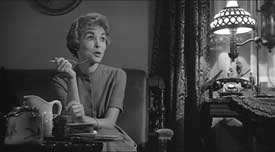
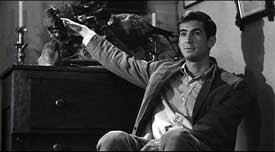
The Parlour Set
The room is depicted a tiny, only sufficient to fit in a lamp, a coffee table, two chairs, a chest, curtains, pictures, candles, several other small items and a lamp. The lamp is located toward the left of Marion, and it the only light portrayed in the scene. As the light was the only source it produced certain effects on each character, which demonstrate the certain aspects of their constructs.
As Marion is sat close to the lamp, her face appears perfectly lit and it highlights her beautiful features and produces an angelic, glimmering effect. However, the light makes her stand out, making her somewhat vulnerable, almost like a “rabbit in the headlights”. However, the light could indicate that Marion’s bad deed of embezzlement is not an act of evil, as she is not hidden by the shadows which demonstrations of the connotations of her innocent character. Moreover the soft effect the high key lighting makes her appear soft and delicate, furthermore making her stand out from the dull and grim background of the motel. No shadows of Marion are indicated, telling the audience she is pure and genuine.
However the composition of Norman is extremely clever. Norman is placed away from the source of light and slightly to the edge. This effect produces stark contrast, producing a shadow of Norman as well as additionally hiding half of Norman in darkness, demonstrating the psychological state of the character with the schizophrenia aspect of his character. Additionally the low key lighting portrays the consumption of his character by evil, the stark contrasts in shadow demonstrate how an element of his persona is hidden while the shadows which threateningly fill the room portray the hidden side of Normans mind which wish to emerge, how they are omnipresent in Norman, waiting to strike.
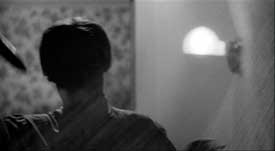
In the shower Scene, the killer is completely consumed by shadow, firstly to hide the identity of the killer and the figures outline trick the audience into believing the mother is the killer. Additionally the shadow indicates how the mother side of Norman’s persona has completely consumed Norman, allowing him to commit the gruesome murders.
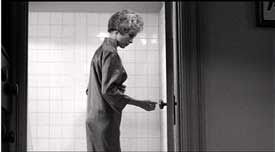
In this shot, Marion is portrayed walking into the high key lighting. She appears vulnerable in her near nudity and the high key lighting is symbolic of Marion taking the steps to heaven, indicating he immediate death and portraying her innocence, despite her crimes.
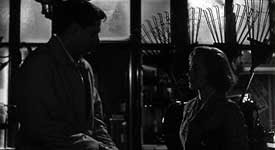
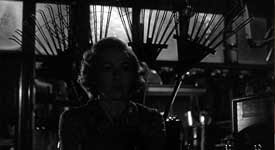
The Shots above are very interesting. Shot is composed of the female and male subjects, several small bright windows which create the shadow effects, as well as the eerie and dominant three rakes. The three rakes, although connotations of their domestic usage also have connotations of weapons and a knife. The fatal use of this domestic item parallels the use of a kitchen knife in Marion’s murder, making the props significant.
The female subject is eclipsed in shadow, portraying the dangerous investigation she is producing while the rakes behind her exemplify the immediate death which she is finding, the height of rakes make the female subject appear more vulnerable.
The Mise-en-scene is a French term which means “put in the scene” or “aspects of the scene”. In Film, its meaning is vast including composition and framing, sets, props, acting and lighting. In cinema, anything which is incorporated into the shot and the arrangement of it has been produced for a reason, to create representations and to allow the audience to generate ideas on the action on screen automatically, without being introduced to the narrative.
In our film, Mise-en-scene will be crucial in order to create an atmosphere as well as produce particular representations of subjects.
Mise-en-scene in cinema comprises of these ingredients;
Production purposes: Sets, costumes and Props.
The use of colour: Tones, strength and both in production and post-production.
The use of Lighting
The performance of the Actors: facial expression, use of props and body language.
Mise-en-scene and the viewer:
As the audience, a movie relies on the mise-en-scene to produce special effects, no other aspect of film production can create. Films which incorporate mise-en-scene well allow the view to stop and analyse the composition and framing of the scene, and what it tells us as a viewer. The narrative can be articulated by the mise-en-scene, as movements of actors or composition of sets can alter the power relationships and atmosphere of scene instantly.
Mise-En-Scene in Psycho
As part of my research, I studied the film “Psycho”, by Alfred Hitchcock. The film is a perfect example of the incorporation of all elements of cinema, especially mise-en-scene. I decided to study Hitchcock use of mise-en scene to indentify prefect examples of its use, which I could integrate into the film opening.
Lighting and Sets
Lighting is a crucial aspect of Psycho, especially during the scene in the parlour.


The Parlour Set
The room is depicted a tiny, only sufficient to fit in a lamp, a coffee table, two chairs, a chest, curtains, pictures, candles, several other small items and a lamp. The lamp is located toward the left of Marion, and it the only light portrayed in the scene. As the light was the only source it produced certain effects on each character, which demonstrate the certain aspects of their constructs.
As Marion is sat close to the lamp, her face appears perfectly lit and it highlights her beautiful features and produces an angelic, glimmering effect. However, the light makes her stand out, making her somewhat vulnerable, almost like a “rabbit in the headlights”. However, the light could indicate that Marion’s bad deed of embezzlement is not an act of evil, as she is not hidden by the shadows which demonstrations of the connotations of her innocent character. Moreover the soft effect the high key lighting makes her appear soft and delicate, furthermore making her stand out from the dull and grim background of the motel. No shadows of Marion are indicated, telling the audience she is pure and genuine.
However the composition of Norman is extremely clever. Norman is placed away from the source of light and slightly to the edge. This effect produces stark contrast, producing a shadow of Norman as well as additionally hiding half of Norman in darkness, demonstrating the psychological state of the character with the schizophrenia aspect of his character. Additionally the low key lighting portrays the consumption of his character by evil, the stark contrasts in shadow demonstrate how an element of his persona is hidden while the shadows which threateningly fill the room portray the hidden side of Normans mind which wish to emerge, how they are omnipresent in Norman, waiting to strike.

In the shower Scene, the killer is completely consumed by shadow, firstly to hide the identity of the killer and the figures outline trick the audience into believing the mother is the killer. Additionally the shadow indicates how the mother side of Norman’s persona has completely consumed Norman, allowing him to commit the gruesome murders.

In this shot, Marion is portrayed walking into the high key lighting. She appears vulnerable in her near nudity and the high key lighting is symbolic of Marion taking the steps to heaven, indicating he immediate death and portraying her innocence, despite her crimes.


The Shots above are very interesting. Shot is composed of the female and male subjects, several small bright windows which create the shadow effects, as well as the eerie and dominant three rakes. The three rakes, although connotations of their domestic usage also have connotations of weapons and a knife. The fatal use of this domestic item parallels the use of a kitchen knife in Marion’s murder, making the props significant.
The female subject is eclipsed in shadow, portraying the dangerous investigation she is producing while the rakes behind her exemplify the immediate death which she is finding, the height of rakes make the female subject appear more vulnerable.
Pyscho- Editing and Camera
As Part of my research, I studied the infamous shower scene from “Psycho”, which is one of the most prestigious examples of editing and camera use in the history of film.
The Shower scene- Horror Editing and Camera
The shower scene is the most influential scene in the history of cinema, it was the films crucial scene and illustrated protagonist Janet Leigh die in a gruesome knife attack. The scene incorporates over 77 separate camera angles, while containing 50 cuts. Despite this variety and fast cutting rate, the scene only lasted three minutes. A majority of the shots are extreme close-ups, depicting the horrendous aspects of the scene as well censoring a majority of the nudity. However, medium shots are incorporated precisely prior to and subsequent to the killing. This amalgamation of close ups paired with the small period of time between cuts make the scene materialize as lengthy, increasingly personal, and horrendously aggressive as if a violent frenzy, this effect wouldn’t have been produced if the clips had been demonstrated unaccompanied or at a wider angle.
Moreover, various interesting technical features were implemented in order to construct certain effects. For instance, in order to secure a straight-on shot of the head of the shower, the camera required a long lens. The central outlets of the shower head were obstructed and with the camera located much further back, making the appearance of the water hitting the lens however did not appear to be running off.
There are various rumours, that although the shower scene is graphic in its construction, the knife never enters the flesh of the subject. Although, detailed frame analysis demonstrates that the subject is penetrated by the knife, although a prosthetic prop is incorporated in the shot. This is interesting concept, the knife entering is recognized as subliminal and the quick pace of the shots actually makes the audience believe that wounds have been inflicted, something which could possible integrated into our film.
The entire shower scene through stills can be seen here;http://faculty.cua.edu/johnsong/hitchcock/pages/stills/shower-1.html
The Shower scene- Horror Editing and Camera
The shower scene is the most influential scene in the history of cinema, it was the films crucial scene and illustrated protagonist Janet Leigh die in a gruesome knife attack. The scene incorporates over 77 separate camera angles, while containing 50 cuts. Despite this variety and fast cutting rate, the scene only lasted three minutes. A majority of the shots are extreme close-ups, depicting the horrendous aspects of the scene as well censoring a majority of the nudity. However, medium shots are incorporated precisely prior to and subsequent to the killing. This amalgamation of close ups paired with the small period of time between cuts make the scene materialize as lengthy, increasingly personal, and horrendously aggressive as if a violent frenzy, this effect wouldn’t have been produced if the clips had been demonstrated unaccompanied or at a wider angle.
Moreover, various interesting technical features were implemented in order to construct certain effects. For instance, in order to secure a straight-on shot of the head of the shower, the camera required a long lens. The central outlets of the shower head were obstructed and with the camera located much further back, making the appearance of the water hitting the lens however did not appear to be running off.
There are various rumours, that although the shower scene is graphic in its construction, the knife never enters the flesh of the subject. Although, detailed frame analysis demonstrates that the subject is penetrated by the knife, although a prosthetic prop is incorporated in the shot. This is interesting concept, the knife entering is recognized as subliminal and the quick pace of the shots actually makes the audience believe that wounds have been inflicted, something which could possible integrated into our film.
The entire shower scene through stills can be seen here;http://faculty.cua.edu/johnsong/hitchcock/pages/stills/shower-1.html
Saturday, 13 February 2010
"The Blair Witch Project"-Analysis
Today, we watched the Blair Witch Project. As we are planning to produce a horror style fiction film opening, I found it very interesting and I have produced an analysis of the films, production, distribution and exhibition.
The Blair Witch Project
The Blair Witch Project is an American horror genre movie which was released in 1999. The plot is portrayed as a documentary put collectively from amateur recording, filmed in an actual period of time. The motion picture depicts the narrative of three teenage student amateur film producers who climb into the eerie Black Hills of Burkittsville, Maryland to produce a documentary concerning a local myth recognized as the Blair Witch, and consequently go missing. The spectator is told that the three were never recovered, even though their video recorder and noise gear (alongside with the majority of the recording they shot) was exposed a year afterwards. This "recovered footage" is offered as the movie the watcher is examining.
The marketing material and Web site for The Blair Witch Project implied that the film consists of actual documentary footage shot by three missing student filmmakers in the woods. I could possibly integrate this technique into my movie, as it would be something simple to re-create.
The reality was that “The Blair Witch Project” is no documented drama. It is an inexpensive, 87-minute, self-regulating feature film made by Haxon Films. The project's unique method of production and postproduction-meant to resemble unrehearsed, documentary footage-may seem more unusual than any supernatural phenomenon, real or imagined. The inexpensive nature means that amateur film producers such as us could re-create this genuine and amateur, yet professional style of the film. Moreover the small cast would be something which would be easiest for us; the handheld camera is perfect as we have these cameras at our disposal.
Daniel Myrick and Eduardo Sanchez directed, co-wrote, and edited the movie, which took an altered route than what they had initially designed. As we would be working in a group of two, this film is perfect example of small scale direction, pre-production and post-production, however we would probably have the same changes and alterations to our original plan, which something we must consider. Daniel Myrick said "We had this premise of shooting it like a documentary for years,"- "As it grew; we embellished it and came up with this legend of the Blair Witch-a whole back-story about a ghost haunting these woods. Besides the 'found' footage, we also shot footage with experts and family members to craft it as a more conventional documentary. The footage we got in the woods, however, was so strong that it told a narrative story by itself. Therefore, we dumped our plan to put other elements into it and ended up using much of that extra footage on the Web site and in other materials we are creating [including a comic book series and a book]. The film uses only the footage shot by the cast." The fact that the footage shot was by the cast members is something we must consider too, as our group size doesn’t allow us to only have directors and editors, we must also star in the film. Additionally, I think the point about removing unnecessary content is crucial because it is only a film opening, and it must state a clear narrative and fast pace (due to the action scenes in horror).
In order to attain their original aims, the producers engaged what they entitled "method filmmaking." Members of the cast captured all the footage over a period of days. Additionally, rather than meticulous scripting, the stars were all provided with outlines, and encouraged to improvise with lines through their character. Moreover, this is something we should consider, detailed scripts are burdening and waste valuable planning time, and we could possibly integrate improvisation and vague scripts in order to receive more genuine, spontaneous and natural acting.
The film incorporates no visual effects to signify the paranormal component of the film, yet incorporates mental stimuli and props, allowing the actors to be the only source of fear for the audience. Myrick and Sanchez confess that the single motive for this was their tremendously small finances. "This was definitely a credit card film, about as much as a decent new car," concedes Sanchez. But motives for preceding effects were for creative purposes-The Blair Witch Project is a response film primarily. The lack of visual effects is something we could utilize in our film opening, although we have the editing facilities to incorporate visual and filmic effects. Personally, as someone who would like to edit the film I feel that our movie would require visuals in order to communicate the opening narrative.
Moreover, the film incorporated low production values which decreased the film creative requirements. The film appeared to be in harsh conditions; furthermore the amateur feel was created by the low production value.
However, I do feel that the low production values did have an effect on the overall quality. Numerous scenes were in terrible lighting and appeared grainy; moreover several scenes are very shaky and make it hard to follow. In our film opening, I believe our production values would have to be much higher in order to produce a quality and understandable film opening. The poor lighting did however create eerie effects in the darkness and produced a more genuine feel to the film, although I feel it did distort the quality at parts.
From my additional research I found the film's cutting and postproduction procedure was very conventional, although it was still strange for an inexpensive, indie movie. Firstly, Myrick and Sanchez had to select throughout 19 hours of movie (which had taken 8 days to film) and video recording to produce the 87 minutes depicted in the motion picture. The editing processes was very long; it took roughly eight months to edit the whole thing. This is something we must contemplate, the editing process could be the hardest part and we must reserve time for editing our recorded footage.
However, the movie's auditory mix was the individual region where distinctive, Hollywood production values were put into the development. The mix was produced by Dana Meekss. Meeks delicately removed and improved a great deal of the audio recorded by the camcorder and DAT machine. Audio editing is something we must integrate too, as well as enhancing and cleaning certain components of the captured audio I felt non-diegetic music and sounds should be integrated into our production.
Budget
The budget for the film was unusually low, around $20-$25 thousand before certain aspects of exhibition and distribution. The small budget here is encouraging as our film would be low budget and we have our own amateur editing facilities which will ultimately reduce costs.
Reaction
Despite its small budge “The Blair Witch Project” grossed $248,639,099 globally. Which is a huge contrast between its final and initial budgets.
What is horror and it's conventions?
What are horror films?
A horror film is a movie which must attempt to obtain the feelings of terror, horror and fright from its audience. Their stories regularly entail subjects of death, the paranormal or psychological sickness. Numerous horror movies in addition incorporate a central criminal.
Premature horror films are chiefly founded upon traditional fiction which posses’ gothic genre, for instance “Frankenstein”, “Dracula”, and “The Phantom of the Opera “.
However other horror films, frequently illustrate the insecurities of life subsequent to the second world war, producing the three separate yet connected sub-genres: the psychological horror “Psycho” film, the Armageddon horror “Invasion of the Body Snatchers” film, and the demonic horror “Exorcist” film.
The final sub-genre might be observed as an updated conversion from the original horror films, increasing on prominence on paranormal elements that convey horror.
Although heavily criticized, horror movies have produced some the most famous directors in film. Some examples of famous horror directors include Roman Polanski, David Lynch, William Friedkin, Alfred Hitchcock, Sam Raimi, Richard Donner, Francis Ford Coppola and Stanley Kubrick .A quantity of horror films integrate fundamentals of genres such as black comedy, fantasy, thrillers and science fiction.
History of Horror
1890s-1920s
Initial exemplifications of supernatural topics became apparent in various silent short films produced by Georges Melies, particularly the 1896 film “Le Manoir du diable”, which is believed to be the first horror film.
In the beginning 20th century, several landmarks designed for the horror type counting the primary monster to materialize in a unabridged horror film which was Quasimodo, the “hunchback of Notre-Dame” made famous in the Victor Hugo's narrative, "Notre-Dame de Paris" (available in 1831).
A majority of the initial feature length horror movies were produced by German film producers in the 10s and 20s, throughout the German Expressionist movie era. These films influenced Hollywood films. The Pual Wegener 1915 film “The Golem” and the 1920 Robert Wiene film “The Cabinet of Dr. Caligari” with their expressionist approach, later influenced film directors varying from Tim Burton to Orson Welles. Additionally, this era of film generated the initial matter of vampires in the 1922 film “Murnau's Nosferatu”, an alteration of Dracula by Bram Stoker.
Premature American dramas experiment in horror subjects, counting The Hunchback of The Monster (1925) and Notre Dame (1923) which together starred Lon Chaney, Sr., considered the original American horror star. Nevertheless his most celebrated position was in “The Phantom of the Opera (1925)”, conceivably the accurate forerunner of Universal's celebrated horror sequence of films.
1930s-1940s
In the early 1930s American film producers, chiefly Universal Pictures Co. Inc., popularized the horror movie, conveying a succession of triumphant Gothic films counting Dracula (1931) and Frankenstein (1931), several of which combined the science fiction genre with the Gothic horror genre, namely the James Whale movie “The Invisible Man “(1933).Additionally, Tod Browning (who directed Dracula) moreover prepared the notorious “Freaks” (1932). The movies, although intended to fulfil the thriller genre, in addition integrated sombre ingredients. These films were moulded by the previously mentioned German expressionist films in the 1920s.
Fritz Lang (Austrian-German-American filmmaker) released the thriller film “M” (1931), which told the story of a child killer, again incorporating the horror genre.
Other studios of the day had less spectacular success, but Rouben Mamoulian's Dr. Jekyll and Mr. Hyde (Paramount, 1931) and Michael Curtiz's Mystery of the Wax Museum (Warner Brothers, 1933) were both important horror films.
The Universal horror film series progressed into the 40s among the films, “The Wolf Man” (1941) which was an influential werewolf film. During this period Universal furthermore sustained the production sequels for the series of Frankenstein films, amid numerous of movies joining numerous of their creatures. Addtionally the decade saw Val Lewton produce “I Walked with a Zombie” (1943), “Cat People” (1942), and “The Body Snatcher” (1945).
1950s-1960s
During the 1950s, technology significantly advanced and the mood of horror movies formed from the gothic to considerably more relevant topics to the later century audiences. It became apparent that the horror movie had began to form into three sub-categories or genres; the “the horror-of-personality film, the horror-of-Armageddon film and the horror-of-the-demonic film.”
There was a tide of inexpensive, low-budget productions began to appear featuring humans overcoming the 1950s alien phenomena and the mutations of objects and people which were mainly imported from Japan through their immediate familiarity with the issues of nuclear radiation.
Various directors of the horror genre such as Don Siegel with “Invasion of the Body snatchers” (1956) and Howard Hawks “The Thing from another World” utilized the Cold War Paranoia into an appropriate, yet not exploitive atmosphere for their films.
Film producers persisted to combine ingredients of the science fiction genre with the horror genre over the subsequent decades. One outstanding example of this was “The incredible shrinking man” (1957). While it conveyed science fiction qualities, the movie exemplified the fears of living in the “Atomic age” as well as the horrors of social and societal isolation.
Throughout the later period of the 50s and early 60s, production companies determined on manufacturing horror films, counting the British corporation “Hammer Film Productions”. Hammer took pleasure in enormous intercontinental achievement starting with vigorous technicolor films concerning traditional horror persona’s, frequently incorporating actors such as Peter Cushing in addition to Christopher Lee, for instance The Mummy (1959) Dracula (1958), and The Curse of Frankenstein (1957) which spawned numerous sequels. Hammer, along with director Terence Fisher, are extensively recognized as pioneers of the contemporary horror picture.
Previous corporations additionally contributed to an explosion in horror motion picture construction within Britain during the 60s and '70s, together with Tigon-British and Amicus, the later recognized for their collection films such as “Dr. Terror's House of Horrors “(1965).
Furthermore, the first slasher style horror movie was generated in 1960. The Alfred Hitchcock film “Psycho” (1960) which spawned a feature-length original, two television movies, two feature-length pictures, and a feature-length restructure of the original motion picture. The horror has a human rationalization, immersed in the psychology of Freudian and shocking for the time details of withdrawn sexual desires.
Further instances of the horror genre comprise of “Homicidal” (1961), “Whatever Happened to Baby Jane?” (1962), Peeping Tom (1960), “Hush... Hush, Sweet Charlotte” (1964), “The Collector” (1965) and “Pretty Poison” (1968), Pictures with psychological based horror continued to appear at the end of the century with “Silence of the Lambs” (1991).
However supernatural creatures sustained their popularity, nonetheless a majority of these the films demonstrated the “horror of the demonic”. For instance “The Innocents” (1961) and “The Haunting” (1963) are examples of the “horror-of-the-demonic” category of pictures commencing the 1960s. Additionally “Rosemary’s Baby” (1968) formed the devil with flesh, creating the “horror-of-the-demonic” style horror genre.
Another example from Alfred Hitchcock is The Birds (1963). It contains a contemporary environment; describing the peril which branches from the natural world turning against man-kind, in addition to this, the motion picture is a single example of the primary American examples of the horror-of-Armageddon genre. The theme of nature’s madness re-occurs in films such as “Jaws” and “King Kong”.
A significant horror movie of the 60s was “Night of the Living Dead” (George Romero, 1968). The motion picture was Produced and directed by himself, with funds of only $114,000, it produced $12 million nationally and $30 million internationally. This horror-of-Armageddon motion picture concerning zombies was afterwards considered "culturally, historically or aesthetically significant" sufficient to be conserved by the United States National Film Registry. Amalgamating mental insight with gore, it enthused the genre yet additionally from the gothic horror tendency of previous times and created domestic horror.
1970s-1980s
In 1964, the Production Code of America ended, coinciding with the additional economic achievements of inexpensive “gore” genre movies coming to an end forced the 1970s to produce a new genre of film: occultism. Occultism is a genre of film which contained the gore of horror films with additional sexual denotations. These were produced as “A-Films”.
The controversial 1968 Roman Polanski film “Rosemary’s Baby”(which starred Mia Farrow), although heavily criticized received outstanding success and allowed a tide of more occult film releases in the 70s. For Example the 1973 William Friedkin film “The Exorcist”.
Furthermore, reincarnation and wicked children became fashionable topics (for example the 1971 Robert Wise film “Audrey Rose”), which depicted a male who believed his child was a reincarnation of a deceased individual. Moreover the 1977 film “Alice, Sweet Alice” exemplifies a religious themed slasher and horror genre about a young girl’s murder with her sibling as the primary suspect.
A new illustration of this was “The Sentinel” (1977) in which a young fashion model realizes her home may be a passage to hell.
Ideologies of the 60s started to manipulate horror genre films, with the adolescences in the culture started exploring the genre. The 1977 Wes Craven film “The hills have eyes” in addition to Texas Chain Saw Massacre (Tobe Hooper, 1974) remembered the horrors of the Vietnam War. Moreover, George Romeo ridiculed materialistic society in Dawn of the dead (1978). Furthermore David Cronenburge starred in movie sub-genre of “mad scientist” through uncovering the modern dread about technological advancement and humanity, and recreating the “body horror” genre with “Shivers” (1975).
What's more the 1970s portrayed the debut of Stephen King on the movie landscape with a variety of his novels becoming screen adaption’s, commencing with “Carrie” (Brian DePalma, 1976), which received an Academy Award nomination.
The creation of the hit-film “Halloween” (John Carpenter, 1978) which coincided with creation of “Friday the 13th” (Sean Cunningham, 1980). The subgenre happens to be gradually more popular, allowing a new wave of violent films throughout the following decades. Moreover over “Black Christmas” (Bob Clark, 1974) was another notable example of this sub-genre.
“Jaws” (1975) was the beginning of Steven Spielberg’s ascend to prominence. It commenced a new genre of killer animals which included “Up from the Depths” (1979) and “Orca” (1977). However the movie “Jaws” is believed to be one of the primary motion pictures to incorporate B film ingredients like horror and gore in a huge Hollywood picture.
Alien (1979) blended graphic violence with naturalistic performance of the 70s decade with creature stories of previous decades, and incorporates the science fiction genre. Furthermore the film was incredibly triumphant at exhibition and became a milestone for the science fiction style film.
An enormous increase in horror movie sequels was witnessed in the 1980’s. For instance the 1982 Tobe Hooper film “Poltergeist” was succeeded by a small screen series along with two follow-up films. The continuous release of sequels to the “Friday the 13th”, “Halloween” and the hugely successful 1984 slasher style film “A Nightmare on Elm Street” (Wes Craven) dominated the horror genre throughout the 80s. An additional fashionable 80s horror genre style was “Creepshow” (Stephen King and George A. Romero) initiated two follow ups.
1990s
Within the initial part of the 90s, the genre sustained numerous subjects from the previous decade. Follow-ups from the “Child's Play” and “Leprechaun” sequences indulged in various business accomplishments. The slasher style movies “Halloween”, “Friday the 13th”, and “A Nightmare on Elm Street” each observed follow-on inside the decade, for the most part of which were greeted with diverse quantities of achievement at exhibition but every one of which were criticized by admirers and critics, with the exemption of “New Nightmare”( Wes Craven).
The “Dark Half” (1993) alongside “In the Mouth of Madness” (1994), “New Nightmare” (1994), and “Candyman” (1992) became a piece of a small revolution of self-reflexive style horror movies. Every specified movie touched upon the connection among imaginary horror in addition to genuine horror. For instance, “Candyman” scrutinized the connection amid an imaginary urban legend and the genuine horror of the racial discrimination that fashioned the villain. Moreover the 1994 film “In the Mouth of Madness” a factual advance was taken, as its central character essentially journeyed from the actual reality into a book shaped by the psycho he was employed to hunt down. This reflective method develops into a more unconcealed and ironical with the entrance of Scream.
Two major troubles pressed the horror genre rearward throughout this era: initially, the horror genre disintegrated by means of the explosion of frenzied slasher and gore style movies in the 80s. Additionally, the youth viewers which enjoyed the gore and morbidity of the earlier era matured, and the substitute viewers for movies of an creative temperament were following the outburst of science-fiction and fantasy movies, the result of the special effects potential with CGI.
As a result, horror required to re-connect with its spectators. Horror was forced to become self-mocking and spoofed, especially towards the final half of the decade. “Braindead” (Peter Hackson, 1992), was an illustration of a film which integrated the amusing effects.
Amid the well-liked English-language horror genre films of the later 90s, only 1999's shock independent smash “The Blair Witch Project” tried genuine horror. Nevertheless, the horror was created in the circumstance of a mock-documentary style.
2000s
The commence of the new decade witnessed a calm era for the horror genre. The fresh release of a reinstated adaptation of “The Exorcist” in 2000 was triumphant regardless of the movie having been obtainable for domestic viewing for a long period. Moreover Franchise films for instance “Freddy vs. Jason” what's more were available for viewing in theatres. Additionally, the 2000s film “Final Destination” commenced a flourishing renewal of intelligent, teenage-themed horror films which additionally produced three follow on movies. Moreover the "Jeepers Creepers" series made similar developments. In addition movies such as "Wrong Turn", "Cabin Fever", "House of 1000 Corpses", assisted in fetching the genre back to controlled ratings in theaters satisfying numerous hardcore horror fans.
A horror film is a movie which must attempt to obtain the feelings of terror, horror and fright from its audience. Their stories regularly entail subjects of death, the paranormal or psychological sickness. Numerous horror movies in addition incorporate a central criminal.
Premature horror films are chiefly founded upon traditional fiction which posses’ gothic genre, for instance “Frankenstein”, “Dracula”, and “The Phantom of the Opera “.
However other horror films, frequently illustrate the insecurities of life subsequent to the second world war, producing the three separate yet connected sub-genres: the psychological horror “Psycho” film, the Armageddon horror “Invasion of the Body Snatchers” film, and the demonic horror “Exorcist” film.
The final sub-genre might be observed as an updated conversion from the original horror films, increasing on prominence on paranormal elements that convey horror.
Although heavily criticized, horror movies have produced some the most famous directors in film. Some examples of famous horror directors include Roman Polanski, David Lynch, William Friedkin, Alfred Hitchcock, Sam Raimi, Richard Donner, Francis Ford Coppola and Stanley Kubrick .A quantity of horror films integrate fundamentals of genres such as black comedy, fantasy, thrillers and science fiction.
History of Horror
1890s-1920s
Initial exemplifications of supernatural topics became apparent in various silent short films produced by Georges Melies, particularly the 1896 film “Le Manoir du diable”, which is believed to be the first horror film.
In the beginning 20th century, several landmarks designed for the horror type counting the primary monster to materialize in a unabridged horror film which was Quasimodo, the “hunchback of Notre-Dame” made famous in the Victor Hugo's narrative, "Notre-Dame de Paris" (available in 1831).
A majority of the initial feature length horror movies were produced by German film producers in the 10s and 20s, throughout the German Expressionist movie era. These films influenced Hollywood films. The Pual Wegener 1915 film “The Golem” and the 1920 Robert Wiene film “The Cabinet of Dr. Caligari” with their expressionist approach, later influenced film directors varying from Tim Burton to Orson Welles. Additionally, this era of film generated the initial matter of vampires in the 1922 film “Murnau's Nosferatu”, an alteration of Dracula by Bram Stoker.
Premature American dramas experiment in horror subjects, counting The Hunchback of The Monster (1925) and Notre Dame (1923) which together starred Lon Chaney, Sr., considered the original American horror star. Nevertheless his most celebrated position was in “The Phantom of the Opera (1925)”, conceivably the accurate forerunner of Universal's celebrated horror sequence of films.
1930s-1940s
In the early 1930s American film producers, chiefly Universal Pictures Co. Inc., popularized the horror movie, conveying a succession of triumphant Gothic films counting Dracula (1931) and Frankenstein (1931), several of which combined the science fiction genre with the Gothic horror genre, namely the James Whale movie “The Invisible Man “(1933).Additionally, Tod Browning (who directed Dracula) moreover prepared the notorious “Freaks” (1932). The movies, although intended to fulfil the thriller genre, in addition integrated sombre ingredients. These films were moulded by the previously mentioned German expressionist films in the 1920s.
Fritz Lang (Austrian-German-American filmmaker) released the thriller film “M” (1931), which told the story of a child killer, again incorporating the horror genre.
Other studios of the day had less spectacular success, but Rouben Mamoulian's Dr. Jekyll and Mr. Hyde (Paramount, 1931) and Michael Curtiz's Mystery of the Wax Museum (Warner Brothers, 1933) were both important horror films.
The Universal horror film series progressed into the 40s among the films, “The Wolf Man” (1941) which was an influential werewolf film. During this period Universal furthermore sustained the production sequels for the series of Frankenstein films, amid numerous of movies joining numerous of their creatures. Addtionally the decade saw Val Lewton produce “I Walked with a Zombie” (1943), “Cat People” (1942), and “The Body Snatcher” (1945).
1950s-1960s
During the 1950s, technology significantly advanced and the mood of horror movies formed from the gothic to considerably more relevant topics to the later century audiences. It became apparent that the horror movie had began to form into three sub-categories or genres; the “the horror-of-personality film, the horror-of-Armageddon film and the horror-of-the-demonic film.”
There was a tide of inexpensive, low-budget productions began to appear featuring humans overcoming the 1950s alien phenomena and the mutations of objects and people which were mainly imported from Japan through their immediate familiarity with the issues of nuclear radiation.
Various directors of the horror genre such as Don Siegel with “Invasion of the Body snatchers” (1956) and Howard Hawks “The Thing from another World” utilized the Cold War Paranoia into an appropriate, yet not exploitive atmosphere for their films.
Film producers persisted to combine ingredients of the science fiction genre with the horror genre over the subsequent decades. One outstanding example of this was “The incredible shrinking man” (1957). While it conveyed science fiction qualities, the movie exemplified the fears of living in the “Atomic age” as well as the horrors of social and societal isolation.
Throughout the later period of the 50s and early 60s, production companies determined on manufacturing horror films, counting the British corporation “Hammer Film Productions”. Hammer took pleasure in enormous intercontinental achievement starting with vigorous technicolor films concerning traditional horror persona’s, frequently incorporating actors such as Peter Cushing in addition to Christopher Lee, for instance The Mummy (1959) Dracula (1958), and The Curse of Frankenstein (1957) which spawned numerous sequels. Hammer, along with director Terence Fisher, are extensively recognized as pioneers of the contemporary horror picture.
Previous corporations additionally contributed to an explosion in horror motion picture construction within Britain during the 60s and '70s, together with Tigon-British and Amicus, the later recognized for their collection films such as “Dr. Terror's House of Horrors “(1965).
Furthermore, the first slasher style horror movie was generated in 1960. The Alfred Hitchcock film “Psycho” (1960) which spawned a feature-length original, two television movies, two feature-length pictures, and a feature-length restructure of the original motion picture. The horror has a human rationalization, immersed in the psychology of Freudian and shocking for the time details of withdrawn sexual desires.
Further instances of the horror genre comprise of “Homicidal” (1961), “Whatever Happened to Baby Jane?” (1962), Peeping Tom (1960), “Hush... Hush, Sweet Charlotte” (1964), “The Collector” (1965) and “Pretty Poison” (1968), Pictures with psychological based horror continued to appear at the end of the century with “Silence of the Lambs” (1991).
However supernatural creatures sustained their popularity, nonetheless a majority of these the films demonstrated the “horror of the demonic”. For instance “The Innocents” (1961) and “The Haunting” (1963) are examples of the “horror-of-the-demonic” category of pictures commencing the 1960s. Additionally “Rosemary’s Baby” (1968) formed the devil with flesh, creating the “horror-of-the-demonic” style horror genre.
Another example from Alfred Hitchcock is The Birds (1963). It contains a contemporary environment; describing the peril which branches from the natural world turning against man-kind, in addition to this, the motion picture is a single example of the primary American examples of the horror-of-Armageddon genre. The theme of nature’s madness re-occurs in films such as “Jaws” and “King Kong”.
A significant horror movie of the 60s was “Night of the Living Dead” (George Romero, 1968). The motion picture was Produced and directed by himself, with funds of only $114,000, it produced $12 million nationally and $30 million internationally. This horror-of-Armageddon motion picture concerning zombies was afterwards considered "culturally, historically or aesthetically significant" sufficient to be conserved by the United States National Film Registry. Amalgamating mental insight with gore, it enthused the genre yet additionally from the gothic horror tendency of previous times and created domestic horror.
1970s-1980s
In 1964, the Production Code of America ended, coinciding with the additional economic achievements of inexpensive “gore” genre movies coming to an end forced the 1970s to produce a new genre of film: occultism. Occultism is a genre of film which contained the gore of horror films with additional sexual denotations. These were produced as “A-Films”.
The controversial 1968 Roman Polanski film “Rosemary’s Baby”(which starred Mia Farrow), although heavily criticized received outstanding success and allowed a tide of more occult film releases in the 70s. For Example the 1973 William Friedkin film “The Exorcist”.
Furthermore, reincarnation and wicked children became fashionable topics (for example the 1971 Robert Wise film “Audrey Rose”), which depicted a male who believed his child was a reincarnation of a deceased individual. Moreover the 1977 film “Alice, Sweet Alice” exemplifies a religious themed slasher and horror genre about a young girl’s murder with her sibling as the primary suspect.
A new illustration of this was “The Sentinel” (1977) in which a young fashion model realizes her home may be a passage to hell.
Ideologies of the 60s started to manipulate horror genre films, with the adolescences in the culture started exploring the genre. The 1977 Wes Craven film “The hills have eyes” in addition to Texas Chain Saw Massacre (Tobe Hooper, 1974) remembered the horrors of the Vietnam War. Moreover, George Romeo ridiculed materialistic society in Dawn of the dead (1978). Furthermore David Cronenburge starred in movie sub-genre of “mad scientist” through uncovering the modern dread about technological advancement and humanity, and recreating the “body horror” genre with “Shivers” (1975).
What's more the 1970s portrayed the debut of Stephen King on the movie landscape with a variety of his novels becoming screen adaption’s, commencing with “Carrie” (Brian DePalma, 1976), which received an Academy Award nomination.
The creation of the hit-film “Halloween” (John Carpenter, 1978) which coincided with creation of “Friday the 13th” (Sean Cunningham, 1980). The subgenre happens to be gradually more popular, allowing a new wave of violent films throughout the following decades. Moreover over “Black Christmas” (Bob Clark, 1974) was another notable example of this sub-genre.
“Jaws” (1975) was the beginning of Steven Spielberg’s ascend to prominence. It commenced a new genre of killer animals which included “Up from the Depths” (1979) and “Orca” (1977). However the movie “Jaws” is believed to be one of the primary motion pictures to incorporate B film ingredients like horror and gore in a huge Hollywood picture.
Alien (1979) blended graphic violence with naturalistic performance of the 70s decade with creature stories of previous decades, and incorporates the science fiction genre. Furthermore the film was incredibly triumphant at exhibition and became a milestone for the science fiction style film.
An enormous increase in horror movie sequels was witnessed in the 1980’s. For instance the 1982 Tobe Hooper film “Poltergeist” was succeeded by a small screen series along with two follow-up films. The continuous release of sequels to the “Friday the 13th”, “Halloween” and the hugely successful 1984 slasher style film “A Nightmare on Elm Street” (Wes Craven) dominated the horror genre throughout the 80s. An additional fashionable 80s horror genre style was “Creepshow” (Stephen King and George A. Romero) initiated two follow ups.
1990s
Within the initial part of the 90s, the genre sustained numerous subjects from the previous decade. Follow-ups from the “Child's Play” and “Leprechaun” sequences indulged in various business accomplishments. The slasher style movies “Halloween”, “Friday the 13th”, and “A Nightmare on Elm Street” each observed follow-on inside the decade, for the most part of which were greeted with diverse quantities of achievement at exhibition but every one of which were criticized by admirers and critics, with the exemption of “New Nightmare”( Wes Craven).
The “Dark Half” (1993) alongside “In the Mouth of Madness” (1994), “New Nightmare” (1994), and “Candyman” (1992) became a piece of a small revolution of self-reflexive style horror movies. Every specified movie touched upon the connection among imaginary horror in addition to genuine horror. For instance, “Candyman” scrutinized the connection amid an imaginary urban legend and the genuine horror of the racial discrimination that fashioned the villain. Moreover the 1994 film “In the Mouth of Madness” a factual advance was taken, as its central character essentially journeyed from the actual reality into a book shaped by the psycho he was employed to hunt down. This reflective method develops into a more unconcealed and ironical with the entrance of Scream.
Two major troubles pressed the horror genre rearward throughout this era: initially, the horror genre disintegrated by means of the explosion of frenzied slasher and gore style movies in the 80s. Additionally, the youth viewers which enjoyed the gore and morbidity of the earlier era matured, and the substitute viewers for movies of an creative temperament were following the outburst of science-fiction and fantasy movies, the result of the special effects potential with CGI.
As a result, horror required to re-connect with its spectators. Horror was forced to become self-mocking and spoofed, especially towards the final half of the decade. “Braindead” (Peter Hackson, 1992), was an illustration of a film which integrated the amusing effects.
Amid the well-liked English-language horror genre films of the later 90s, only 1999's shock independent smash “The Blair Witch Project” tried genuine horror. Nevertheless, the horror was created in the circumstance of a mock-documentary style.
2000s
The commence of the new decade witnessed a calm era for the horror genre. The fresh release of a reinstated adaptation of “The Exorcist” in 2000 was triumphant regardless of the movie having been obtainable for domestic viewing for a long period. Moreover Franchise films for instance “Freddy vs. Jason” what's more were available for viewing in theatres. Additionally, the 2000s film “Final Destination” commenced a flourishing renewal of intelligent, teenage-themed horror films which additionally produced three follow on movies. Moreover the "Jeepers Creepers" series made similar developments. In addition movies such as "Wrong Turn", "Cabin Fever", "House of 1000 Corpses", assisted in fetching the genre back to controlled ratings in theaters satisfying numerous hardcore horror fans.
Subscribe to:
Comments (Atom)
